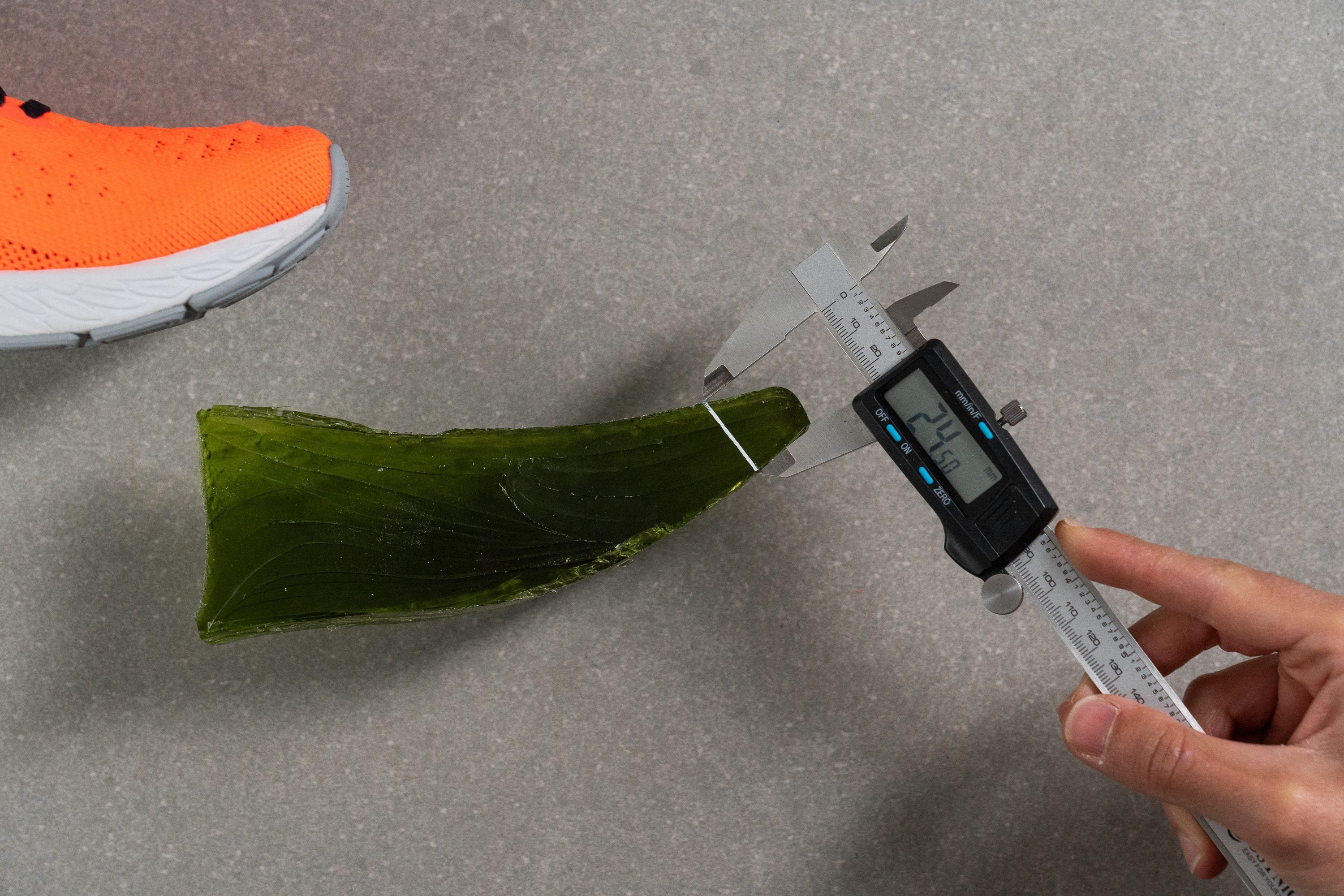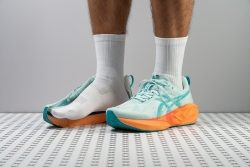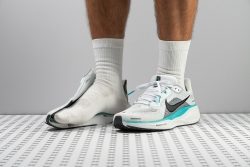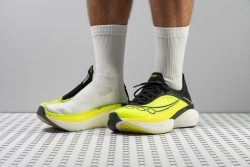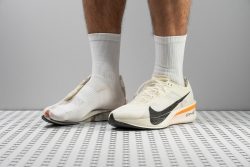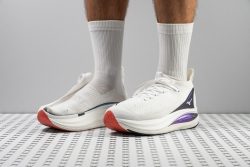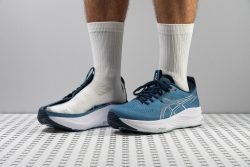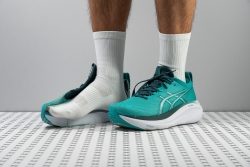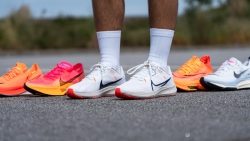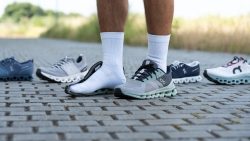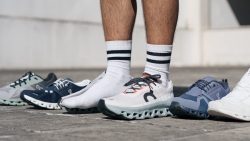7 Best Road Running Shoes in 2025
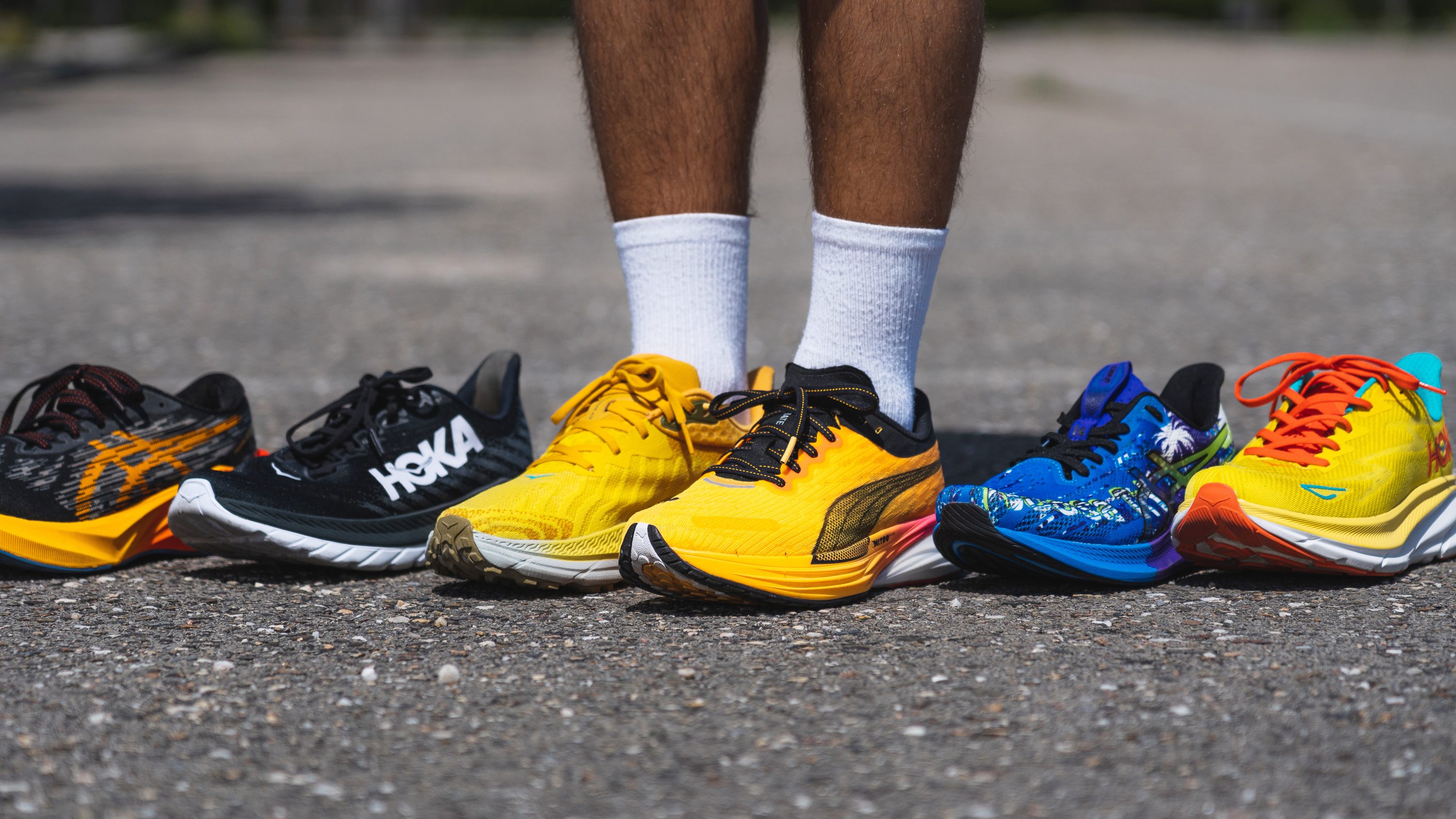
We buy shoes ourselves. We earn commissions when you buy through us, at no extra cost. Why trust us
The number of road running shoes is three times bigger compared to trail running shoes. Thus, buying a pair can be an overwhelming task, especially if you are new to running.
We have tested road running shoes in our lab and on various wear tests. If you want nothing but the best, see our top picks from different categories of road shoes. From a versatile daily trainer and a budget shoe to a premium tempo and racing option, we have the finest choice for you.
This guide dives into the nitty-gritty of road running shoes. Read over to learn what to specifically pay attention to when getting new road shoes!
How we test road running shoes
At RunRepeat, we know the difference between good and great shoes. How? Thanks to our independent shoe testing lab and a meticulous approach to reviewing running shoes:
- We use durometers, scales, callipers, a custom smoke machine, and even a saw to cut each shoe open and measure every aspect of it, from energy return to upper breathability to outsole durability.
- As a team of dedicated shoe fanatics, we perform road runs to test every new release from over 30 brands.
- We purchase all running shoes with our own money to ensure transparency.
Basically, the best ones end up on this list.
Best road running shoes overall
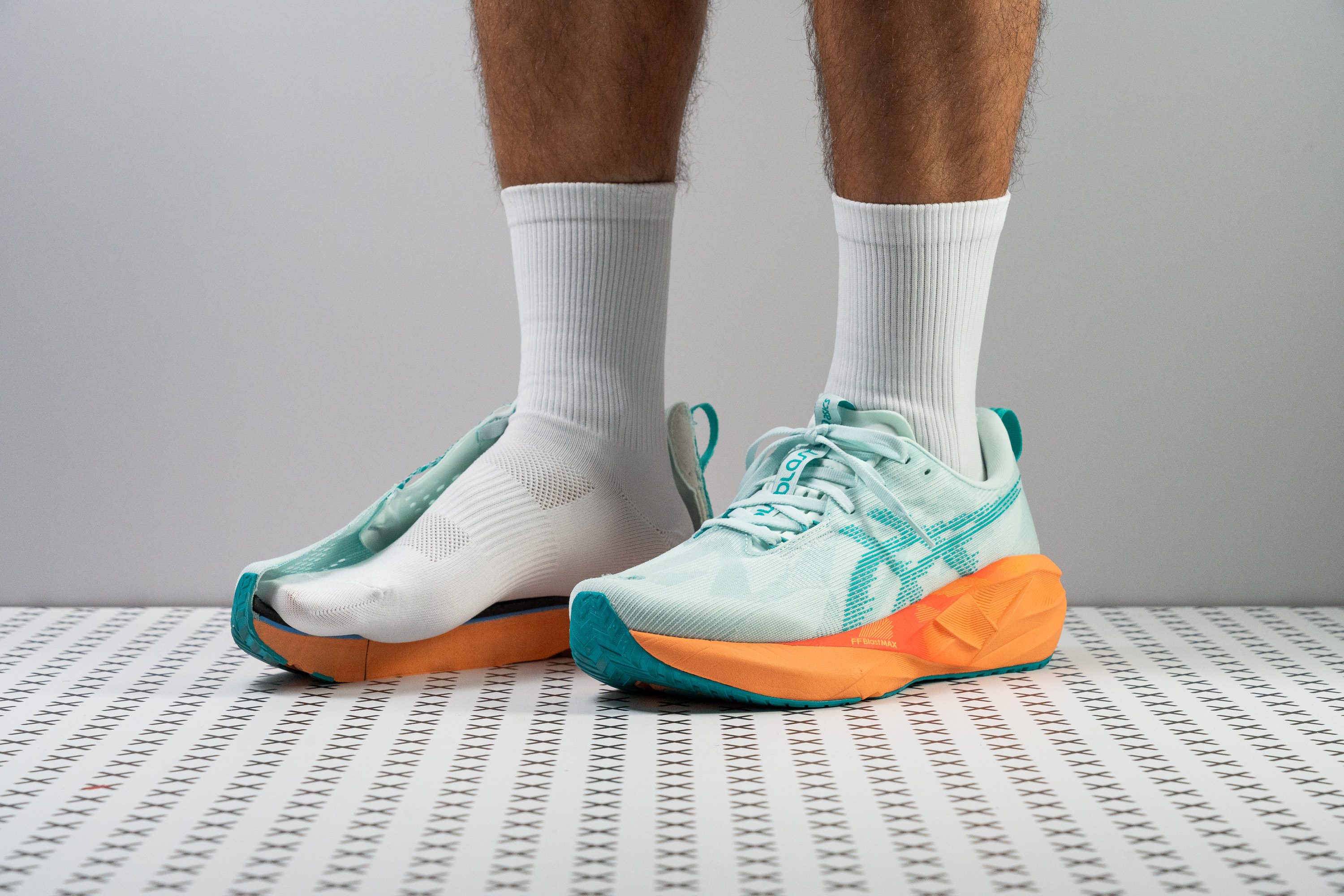























































What makes it the best?
After long hours in the lab and countless miles of pounding the pavement, ASICS Novablast 5 emerged as the best road running shoe. It’s a neutral trainer with unmatched comfort, versatility, and reliable support for any pace and distance.
We can’t get enough of its luxurious cushioning. Running for long hours on tough surfaces feels pleasant because of the plush and decadent foam. It combines maximum height with pillowy goodness. It stands tall at 40.9/33.5 mm, with a durometer measurement 38.4% softer than average. Despite this, our runs still had a lot of pop for faster efforts.
Even with the thick slab of foam beneath us, Novablast 5 delivers a smooth and stable ride by providing an extra 8.3/6.9 mm width in the forefoot and heel for safe landings. In terms of longitudinal movement, this pair moves fluidly with our motions, which is a plus for comfort. Our bend test shows it’s 32.2% more flexible than average.
After reaching double-digit miles, we were impressed to see that the outsole had purely visual and very minor scratches—the plushness and bounce remained the same. When put against our Dremel test, Novablast 5 establishes its longevity by showing less wear than average.
Unfortunately, the upper offers limited ventilation for humid weather. We recommend using this pair in cooler temperatures only to enjoy its full potential.
Pros
- Improved energy return with FF Blast MAX foam
- Plushiest foam in a Novablast yet
- Keeps the same price as v4
- Higher stack height for extra cushioning
- Enhanced flexibility
- Lighter than its predecessor
- Best Novablast ever for wide feet
- Exceptional weight-to-cushion balance
- Works for short, medium and long runs
Cons
- Breathability could be improved
- Toebox durability
- Toebox durability
Best road running shoes for daily training
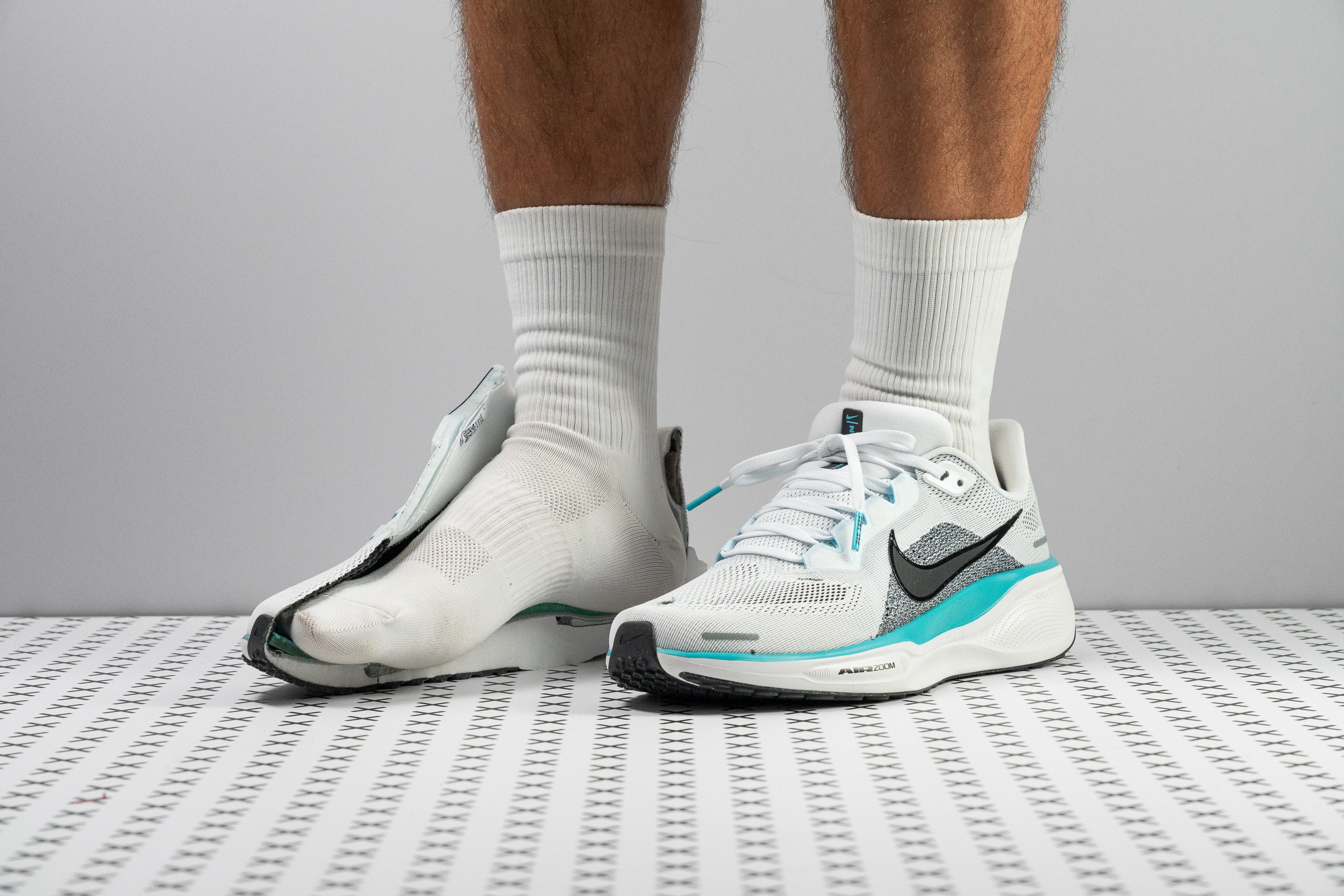




























































What makes it the best?
After upgrading itself over 40 years, the Nike Pegasus 41 asserts itself as a reliable training partner—seamlessly combining remarkable comfort, steady support, and exceptional versatility. Following extensive runs and thorough lab analysis, we confidently name the Pegasus 41 as the top daily trainer for road running.
From short to long runs, the combination of the ReactX foam and the two Air Zoom units delivers a cushioned and bouncy ride. Our durometer shows the foam is a plush 15.8 HA for sustained underfoot relief.
This Peg has subtle guiding elements to keep our feet in the right position and direction. Other than the midsole sidewalls, the shoe has a rocker geometry that brings us forward effortlessly. The toe spring also feels more pronounced, making the ride more enjoyable.
Thankfully, Pegasus 41 retains the classic natural running experience by keeping its midsole flexible. Our bend test shows it’s 34.0% more bendable than average. Because it barely has resistance, it’s easy to use for other activities such as walking and cross-training.
While it excels as a versatile shoe, it doesn't specialise in any one area. Runners seeking faster racing or more comfortable easy runs may prefer other options.
Pros
- Enhanced for heel strikers
- New ReactX foam!
- Improved breathability
- Plush upper
- Good durability
- Several stability enhancements
- Newly designed rocker and bevel
- Solid performance
- Superior lockdown
- Sustainable features
Cons
- Price increased by $10
- Worse than the v40 in cold temperatures
- Poor grip
- Poor grip
Running shoes with the best energy return
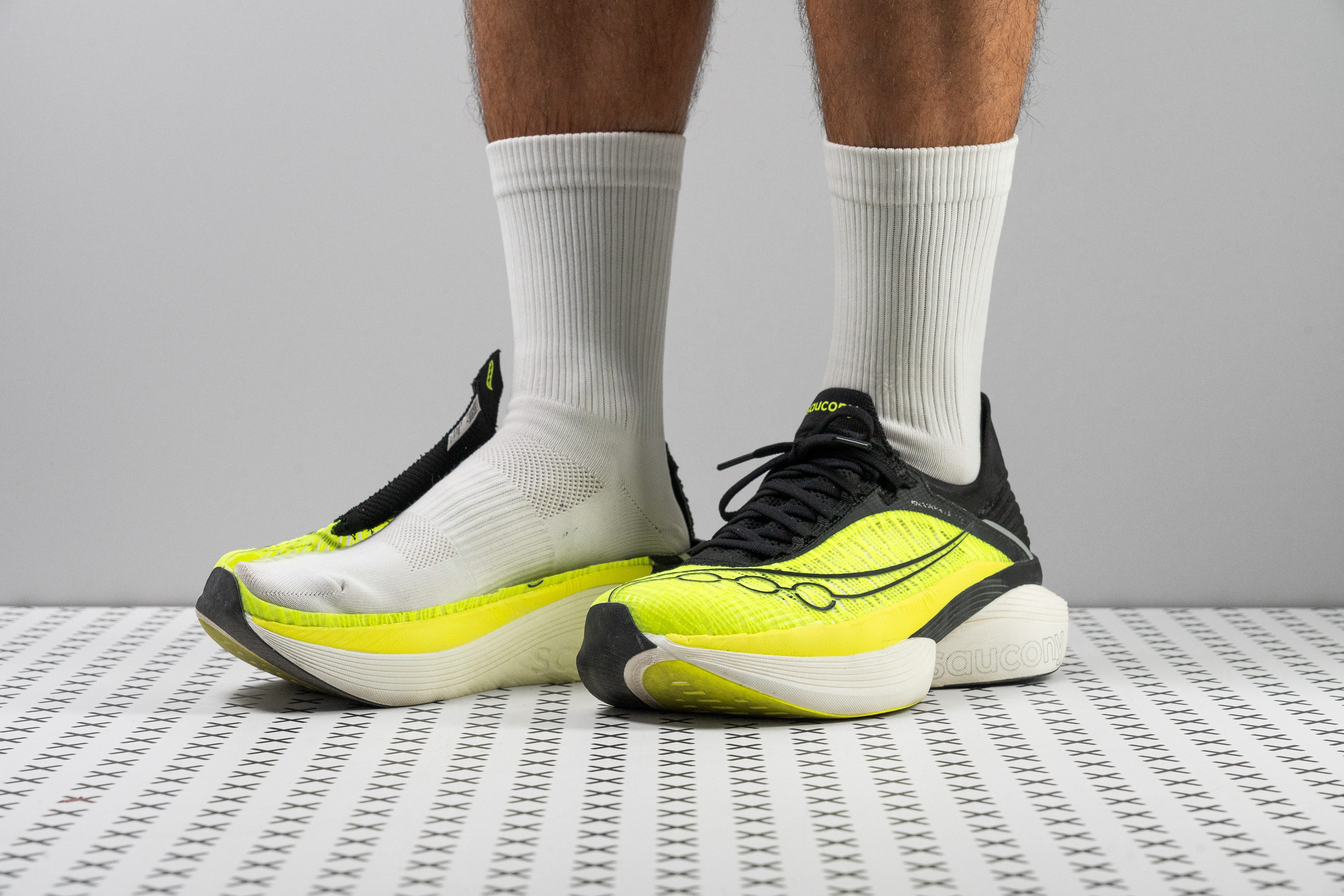















































What makes it the best?
With the Saucony Endorphin Elite 2 smashing lab records and personal bests, it leads the road-running pack in terms of energy return. Its IncrediRUN foam delivers an otherworldly blend of power and shock absorption, while its weightlessness ensures agility and top speed. No doubt, this shoe pushes us to our best performance.
We immediately took the shoe apart to verify the propulsion we experienced. Testing the foam, we recorded massive energy return scores of 80.6% in the heel and 82.1% in the forefoot, setting a new standard in the lab!
EE2’s explosive nature is further enhanced by its minimal 6.9 oz (197g) construction, creating a highly agile and smooth experience. It’s one less burden to carry, allowing us to chase our target wholeheartedly.
The midsole also shows a strong capacity to reduce muscle fatigue during hard runs. We measured a generous stack height of 39.9/32.4 mm, offering world-class shock absorption levels of 157 SA in the heel and 123 SA in the forefoot. The way it reduces the forces of landing with each stride is deeply appreciated, especially in the final miles of our long runs.
However, its tapered toebox may cause issues like blistering and black toenails when the feet start to swell. It would be wise to go for a more accommodating shoe for longer distances, like marathons.
Pros
- Record-breaking energy return
- Ultra-plush foam
- Fantastic shock absorption
- Addictively bouncy and fun feel
- Ideal for the marathon distance
- Durable and breathable upper
- Improved lockdown with knit tongue
- Stack height maxes out the legal limit
- Explosive, forward-driving ride
Cons
- A touch heavy for being an elite supershoe
- Budget-crushing price
- Lateral stability is extremely bad
- Lacks specific support for heel strikers
Best road running shoes for race
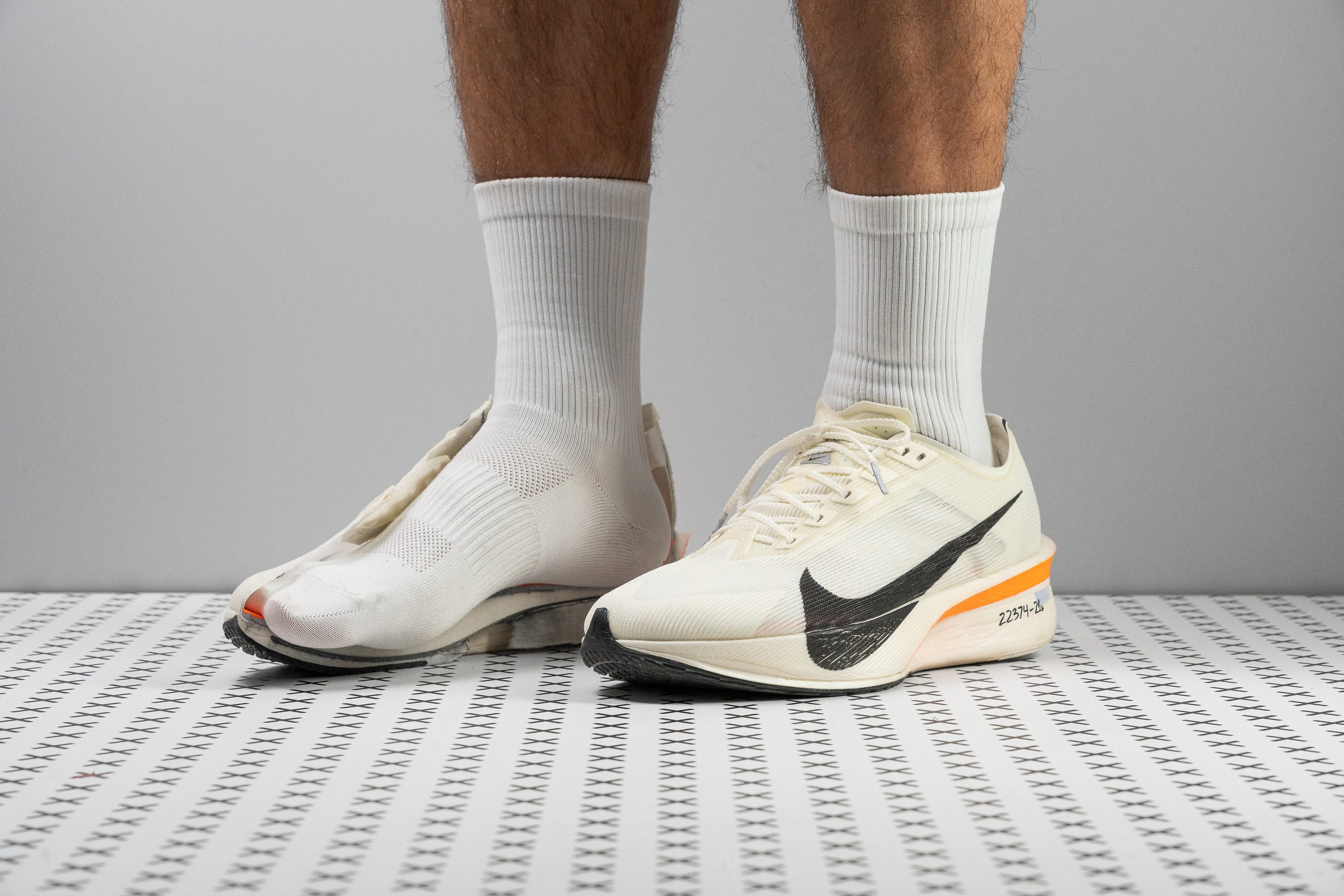























































What makes it the best?
Think devilish speed, consistent comfort, and a lightweight sensation: this is exactly what we experienced after running a fair share of races in the Nike Vaporfly 4. This hypersonic shoe delivers unforgettable and unmatched performance in and out of the lab, securely setting our personal bests and winning the best racer title among road-running shoes.
Each stride is ignited with limitless energy from its magnificent core—the responsive ZoomX foam and the rigid FlyPlate. Both elements deliver smooth turnovers and sustain our power over long-haul efforts. The soft cushion embraces our feet with springy goodness, as our durometer confirms it’s 5.2% softer than average. The spoon-shaped carbon plate ensures stability and power through its rigidity. Our bend test confirms it’s 14.6% stiffer than average, shining further as we run faster.
We felt like floating through countless miles as VF4 dissipated into our feet with its barely-there weight. Our scale reveals one of the lightest we’ve seen, 5.9 oz (166g), transcending even the 7.3 oz (208g) average supershoe. Running on clouds is an understatement as it offers pleasant ventilation through its upper, which is designed for airflow. In our smoke test, it rated a high 4/5 breathability score.
Unfortunately, its moderate stack height makes it less ideal for marathon races. Those who prefer plush and maximum cushioning should try other pairs.
Pros
- 13% lighter than the Vaporfly 3
- Awesome for 5K, 10K and 21K races
- Full ZoomX midsole
- Spring-loaded carbon-fibre Flyplate
- Fantastic lockdown with premium laces
- Moderate rocker for a more natural ride
- Improved perforated, removable insole
- Better rubber coverage in the forefoot
- Gets improvements from the Alphafly 3
- Great upper featuring breathability and durability
Cons
- Less ideal for marathon racing
- Still lacks the snappy feel of the Vaporfly 1&2
- Narrow midfoot and heel limit stability
Road running shoes with the best shock absorption
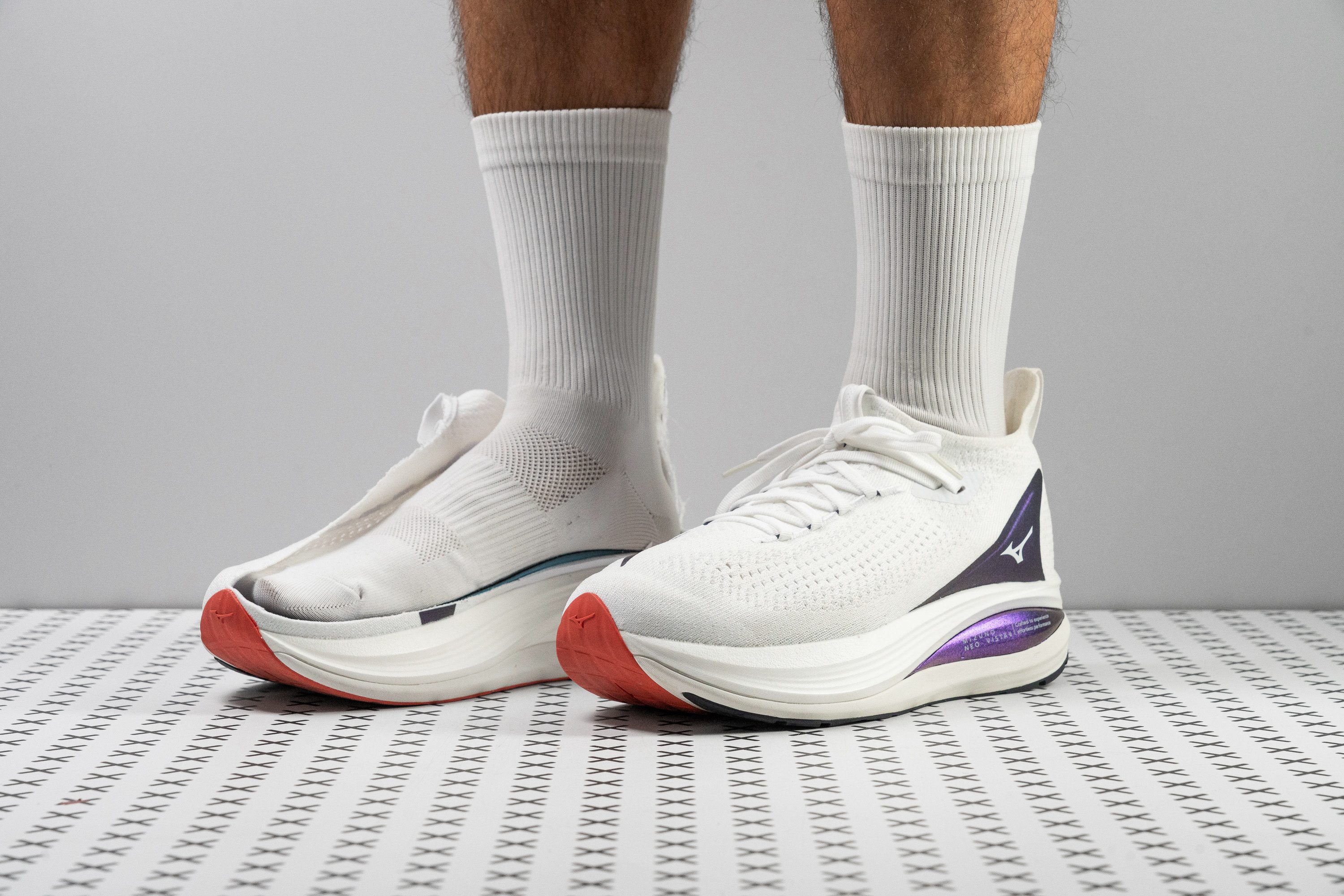
















































What makes it the best?
The Neo Vista 2 truly embodies plush cushioning. It stood out among the road-running shoes we tested with its pillowy embrace and weightless ride. Our lab numbers only verified what our feet already knew—shock absorption is #1 for this Mizuno shoe.
The Neo Vista 2 was immensely comfortable during all our runs, regardless of distance. The secret to this luxurious comfort lies in its shock-absorbing midsole, which rated with the highest score we’ve seen at 170 SA in the heel and 137 SA in the forefoot.
Tall feels like an understatement. Our lab reveals its 46.0/37.5 mm mega stack, erasing the harshness of the ground with its forefoot being taller than the average heel stack in our lab. How mindblowing is that! Truly, it completely erased the ground feel.
Surprisingly, this maximalist offers an effortless ride with its 9.3 oz (264g) weight being at par with the average. In addition, it takes minimal effort to bend our feet, proven by its 10.0% higher flexibility score than average in our bend test.
While it provides next-level comfort, it lacks responsiveness for more exciting runs. Those who want a more performance-driven trainer should find another pair.
Pros
- Massive stack height
- Super-plush Enerzy NXT foam
- Perfect for long runs
- Lightweight for its huge size
- Good durability
- Breathable knit upper
- Roomy toebox height
- Insanely fun!
Cons
- Not enough energy return
- Price hike feels unjustified
- Not stable for heel strikers
Best stability road running shoes
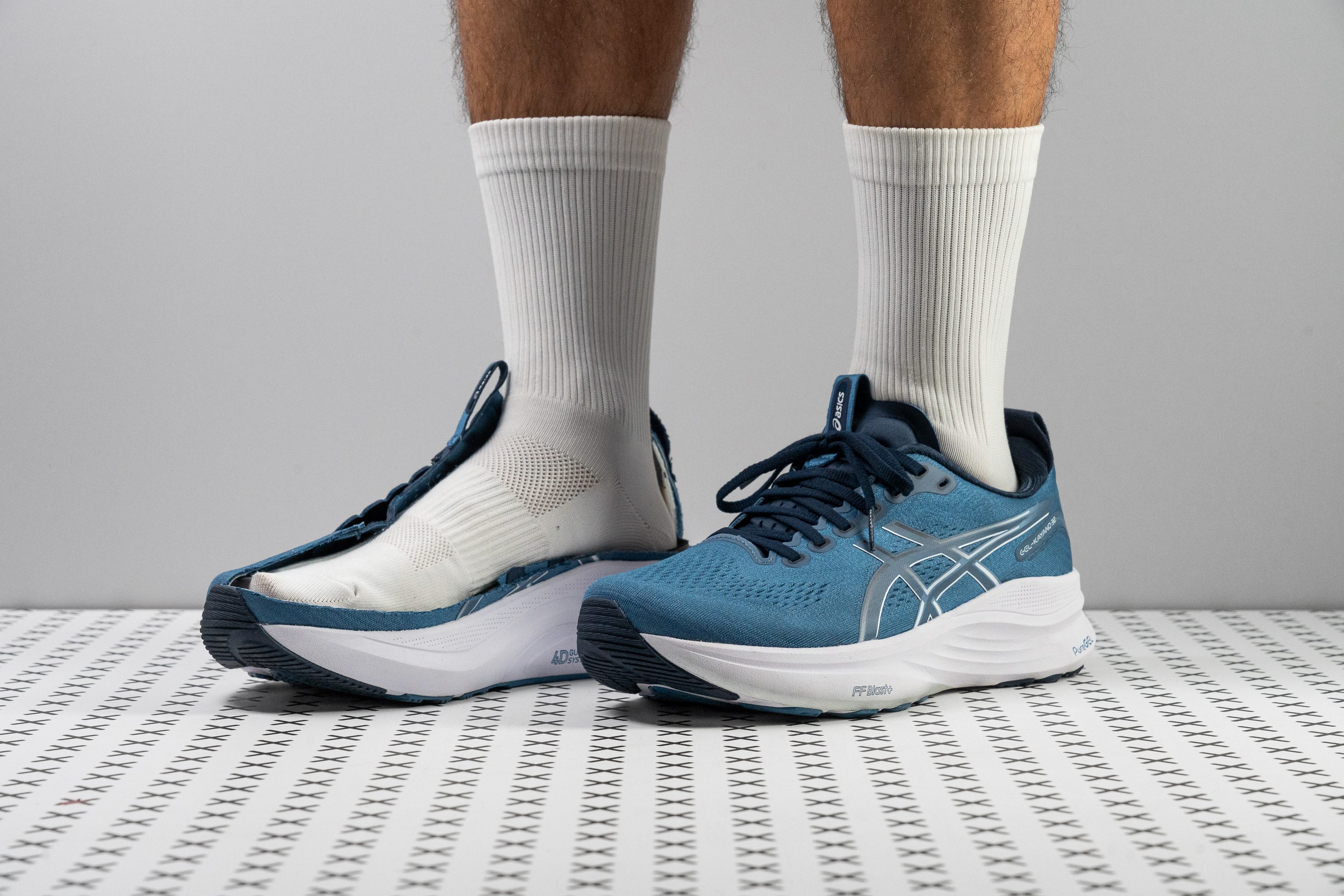













































What makes it the best?
The ASICS Gel Kayano 32, our top pick for the best stability road-running shoe, achieves the sweet spot between comfort and support. Featuring a plush mega-stack combined with the innovative 4D Guidance System, this trainer delivers a forgiving yet surefooted ride.
The main star is the 4D Guidance System, consisting of a soft foam strategically placed beneath each arch to adjust to the contours of our foot. It's our very own custom-made support and protection against unwanted movements. Another stability feature is the wider-than-average 119.8/97.2 mm midsole that instils a sense of security and confidence with each landing. What's remarkable is how these stability elements remain unobtrusive yet reliably emerge when needed.
While most stability shoes are firm and grounded, GK32 deviates from the standard with its tall and plush cushioning. Our lab reveals the foam rises to 39.9/30.6 mm and has above-average shock absorption of 133 SA in the heel and 116 SA in the forefoot. This heavenly combination dampens landing impact and spoils our legs with buttery goodness to last long.
On the other hand, we were disappointed with its subpar energy return. Those seeking a performance-driven trainer should try alternatives.
Pros
- Amazing shock absorption
- Plush and breathable upper
- Made to last
- Dependable for most pronators
- Heavy-duty outsole with excellent grip
- Stable as a table
- Pillow-soft heel padding
- Improved fit
- Excellent build quality
Cons
- Not for soft-foam lovers
- Bad energy return
- Overpriced in Europe
Road running shoes with the best traction
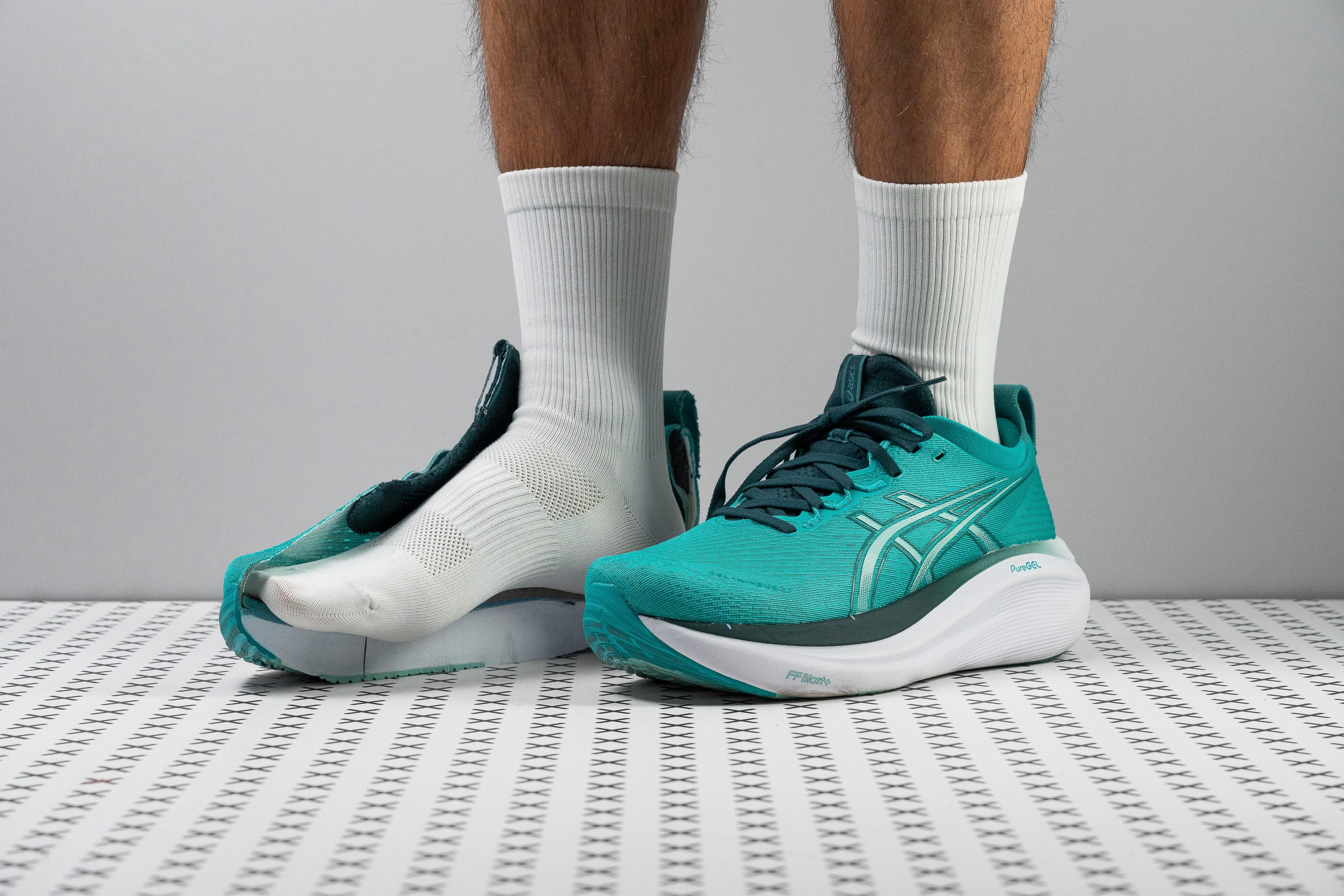


















































What makes it the best?
To handle the forces of repetitive strides on the streets, ASICS Gel Nimbus 27 features solid impact protection and reliable grip to help us chase the miles. Our lab tests validate that it offers the best traction for road running, while it features subtle guidance features to offset its massive height.
With Nimbus 27’s solid 0.84 friction score in our traction test, it erases any doubts and can handle dry or wet roads effortlessly. We could control each stride in the rain since the outsole is 82.6% grippier than average.
Underfoot is a massive 42.7/34.4 mm cushioning that offers lasting comfort, especially with its exceptional 136 SA or shock absorption score. This heavenly combination makes it suitable for long runs and heavier runners.
Surprisingly, this maximalist offers confidence-inspiring landings thanks to its stiff construction and vast base. It greatly resists excessive lateral movements and ankle twists, proven by its solid 5/5 rating for torsional rigidity. Our calliper also confirms the base is massive at 119.5/99.8 mm.
Unfortunately, we can’t have it all. The midsole lacks excitement, so we can only recommend this pair for easy paces.
Pros
- Even more foam underfoot!
- Premium-feel, breathable upper
- Fantastic stability
- Improved toebox with extra wiggle room
- Flexible knit tongue
- True maximalist comfort for recovery runs
- Amazing heel lockdown
- Top-tier grip
- Top-tier grip
Cons
- Feels bulky and heavy
- Minor price increase
- Lacks energy return
- Minimal outsole coverage
3 most important things for road running
Running on the roads means you most likely need a cushioned shoe that will provide enough impact protection (good shock absorption) for your feet, given how hard the surface is, a good grip (for wet or dry weather, depending on your climate), and a durable outsole that can withstand the constant friction against the hard asphalt or concrete.
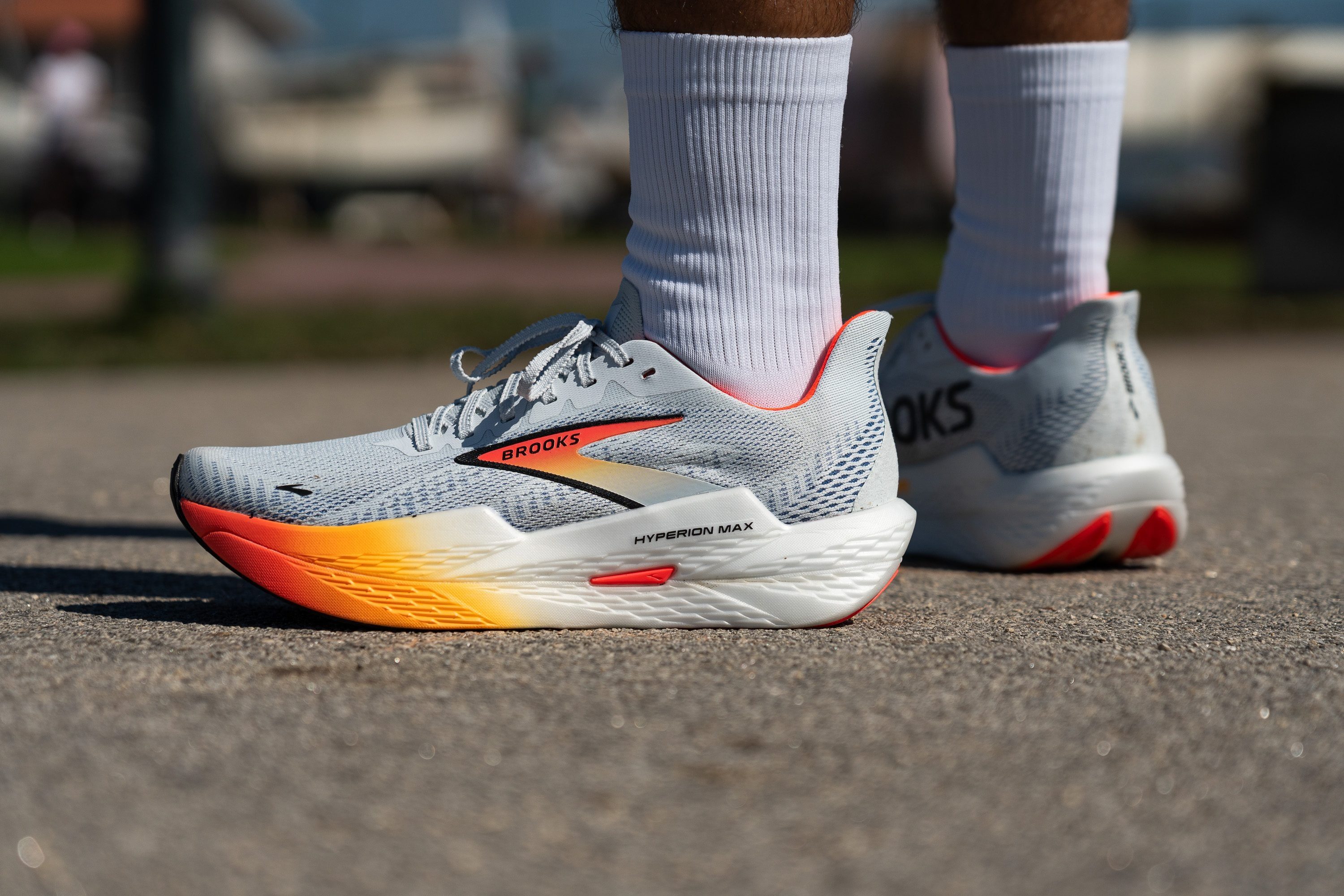
However, it’s not just about those 3 features. Many things depend on your pace, distance, foot strike, pronation, and so on. We will cover the general guidelines here, but keep in mind that outliers exist. There are people who run in flat, non-cushioned runners on the roads, but it’s not common, and we especially don’t recommend it to beginners.
The importance of cushioning in road running shoes
There are many things to be considered when we talk about cushioning:
- shock absorption: how good the shoe is at dampening the impact. The better it is, the less stress is sent to your legs.
- stack height: it tells us how high off the ground the heel and the forefoot are. More cushioning means more impact protection which is highly recommended given the hard running surface. But, more cushioning also means less ground feel.
- heel drop: it tells us the difference in height between the heel and the forefoot. It is very important to know the heel drop and choose one that won’t aggravate your past or current injuries
- the softness of the cushioning: we measure it with a durometer and many runners directly correlate the softness of the midsole with the overall shoe comfort
- energy return: the higher it is, the better! Although it also usually means a) higher price, and b) worse durability.
If you’re a beginner, we recommend a shock absorption of at least 110 SA and a heel drop in the 8-12mm range.
More impact protection or more ground feel?
Stack height tells us how high off the ground we are. In our lab, we use a digital calliper to measure both the heel stack height and forefoot stack height.
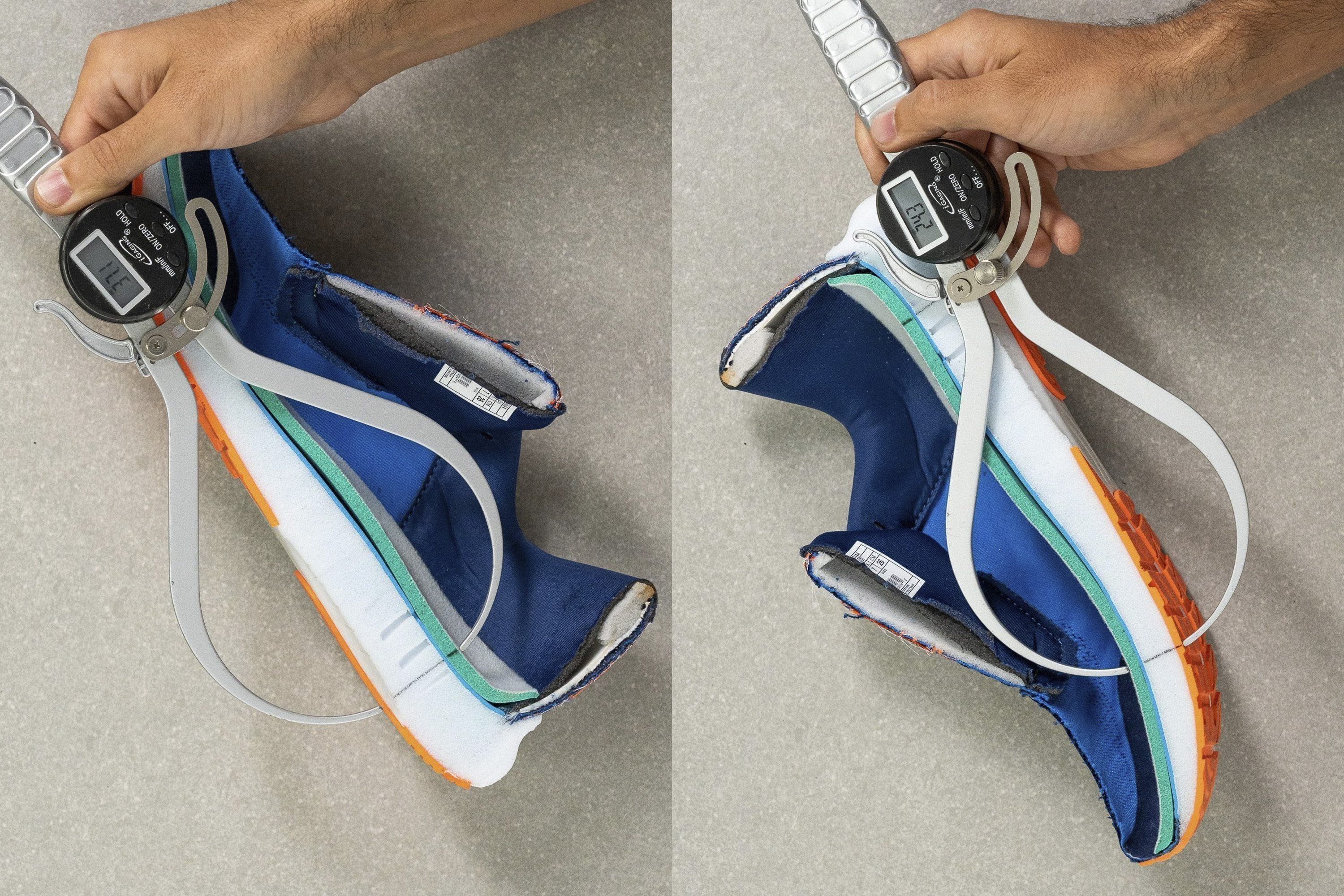
To honour the guidelines from WorldAthletics, we cut the shoe in half first. This is the only way to properly measure the stack height at the centre of the shoe and at the 12% and 75% of the inner shoe length.
Your heel can sit on anything from 7mm to 47 mm high base (based on our current lab measurements). Now, that’s a big variation. The current average sits and 33.8 mm.
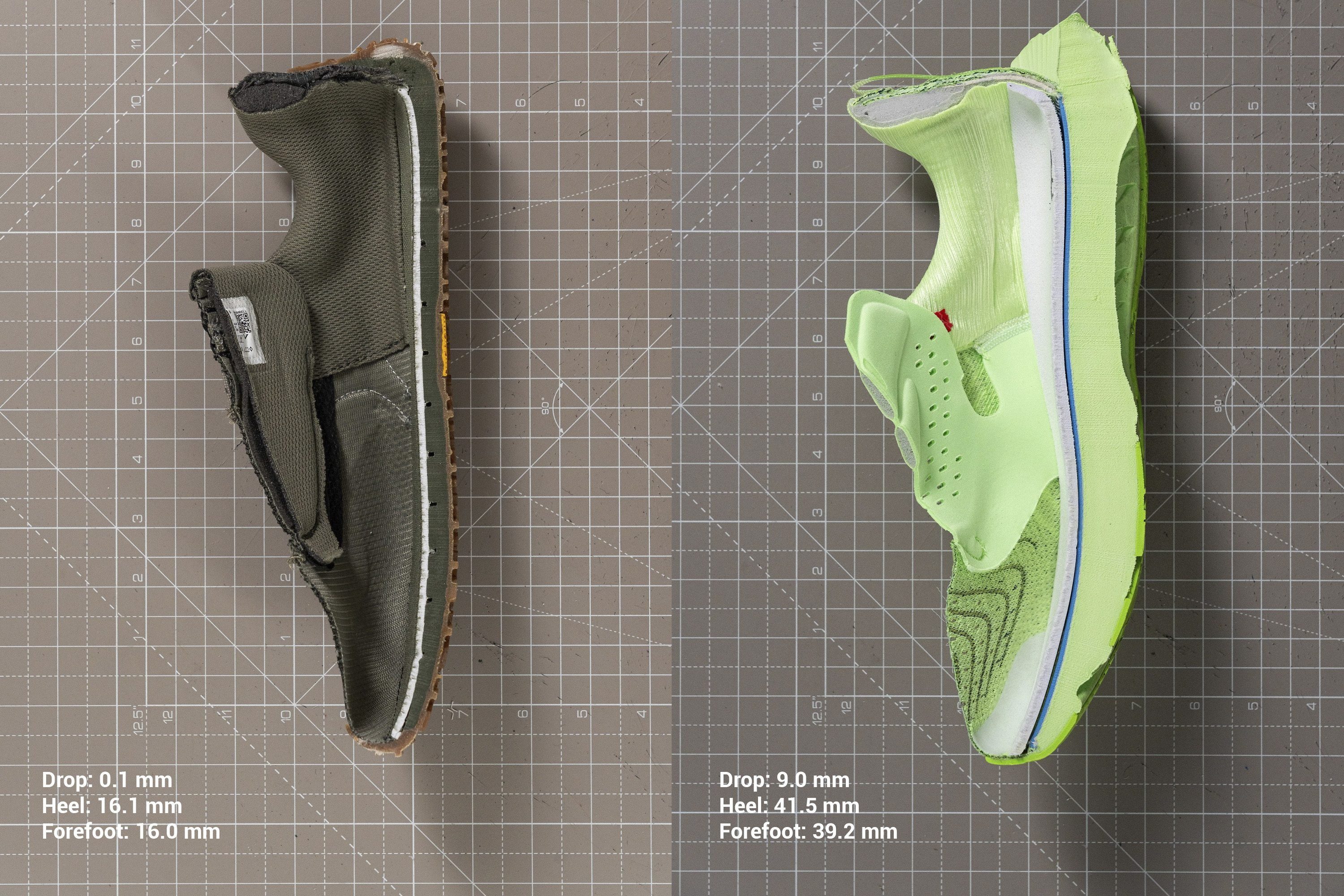
We recommend cushioned running shoes (heel stack height of at least 30-35mm) if you are a beginner, if you are a heel striker and want as much impact protection as possible,or if you’re a heavy runner.
|
You should know that 40mm heel stack height is the legal limit for official races, so if you’re planning on running in a shoe that’s higher than that, check the rules of the race you might participate in first. |
To test shock absorption in our lab, we use an 8.5 kg mass and drop it from a height of 50 mm.
Shock absorption tells us how protective the midsole is or how good it is at dampening the impact at the landing. The higher the shock absorption, the more stress is absorbed by the midsole and, therefore, the less is sent towards your legs.
If you're a forefoot striker, you may want to look at the shock absorption at the forefoot:
We recommend running shoes that are low to the ground (heel stack height less than 30mm) if you’re more experienced, if you plan to do shorter runs, if you love the ground feel.
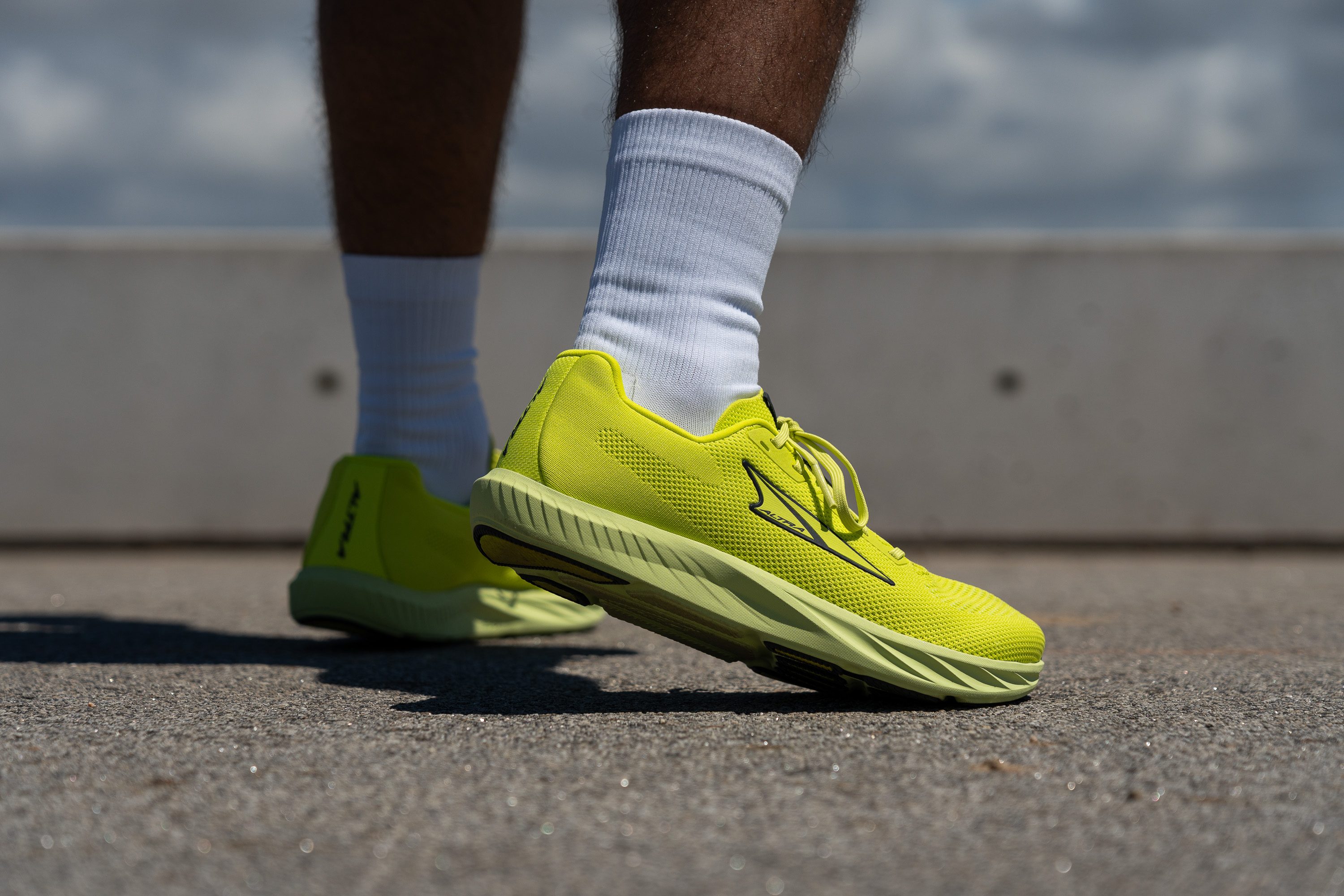
We don’t recommend minimalist or barefoot running shoes to beginners. Choose these shoes if you’re an experienced runner, if you want to strengthen your foot muscles by first walking in those shoes and then gradually getting used to running in them, and keep in mind that forefoot strikers could have an easier transition than heel strikers.
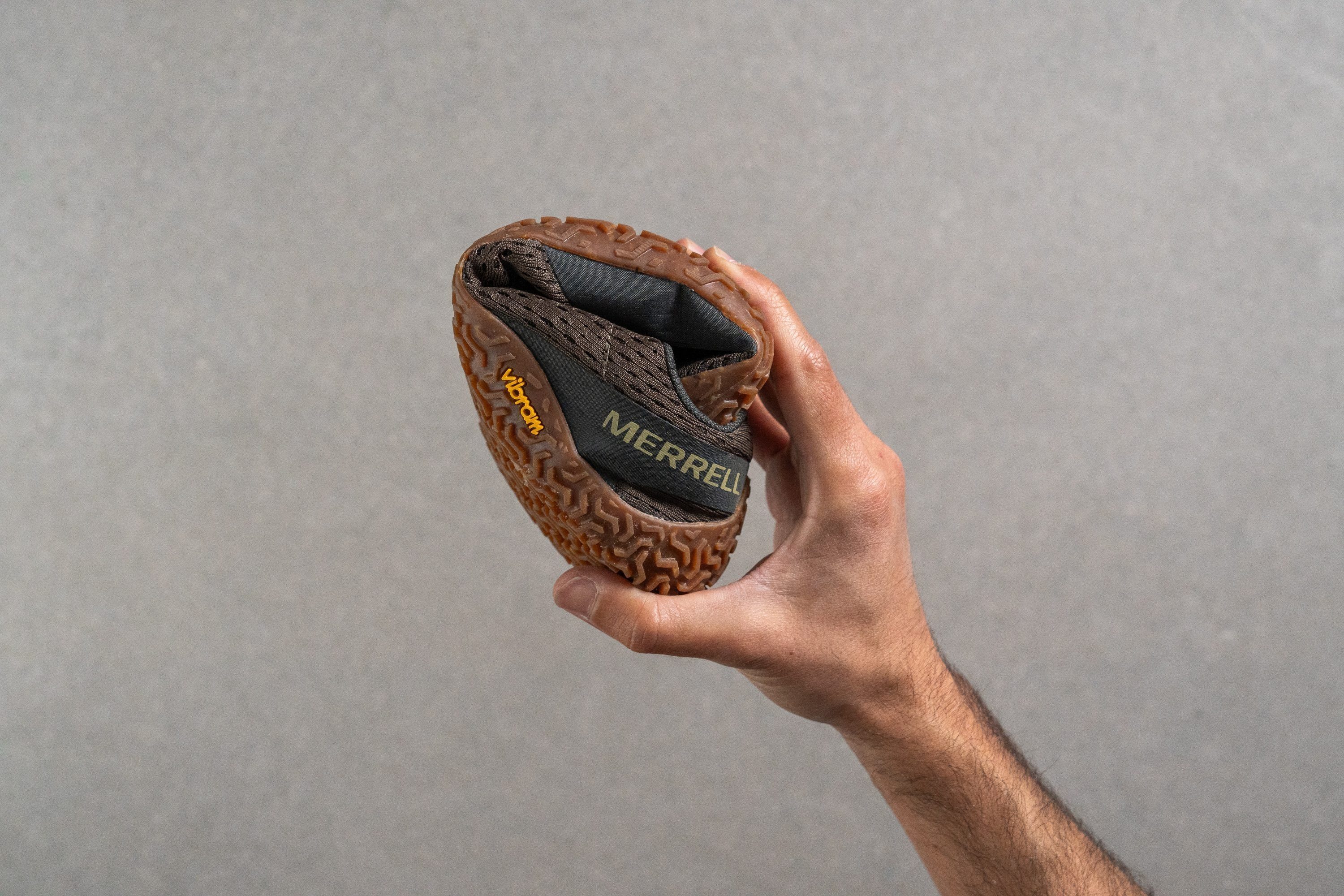
Why heel drop must be taken into account
Heel-to-toe drop is often forgotten about when shopping for new running shoes so here’s why it should not be like that:
- Sudden big changes in heel drop (4mm difference or higher) can lead to muscle strain or injury
- Big changes in heel drop can aggravate current injuries
- Running in shoes with different heel drops can actually help you strengthen different leg and foot muscles
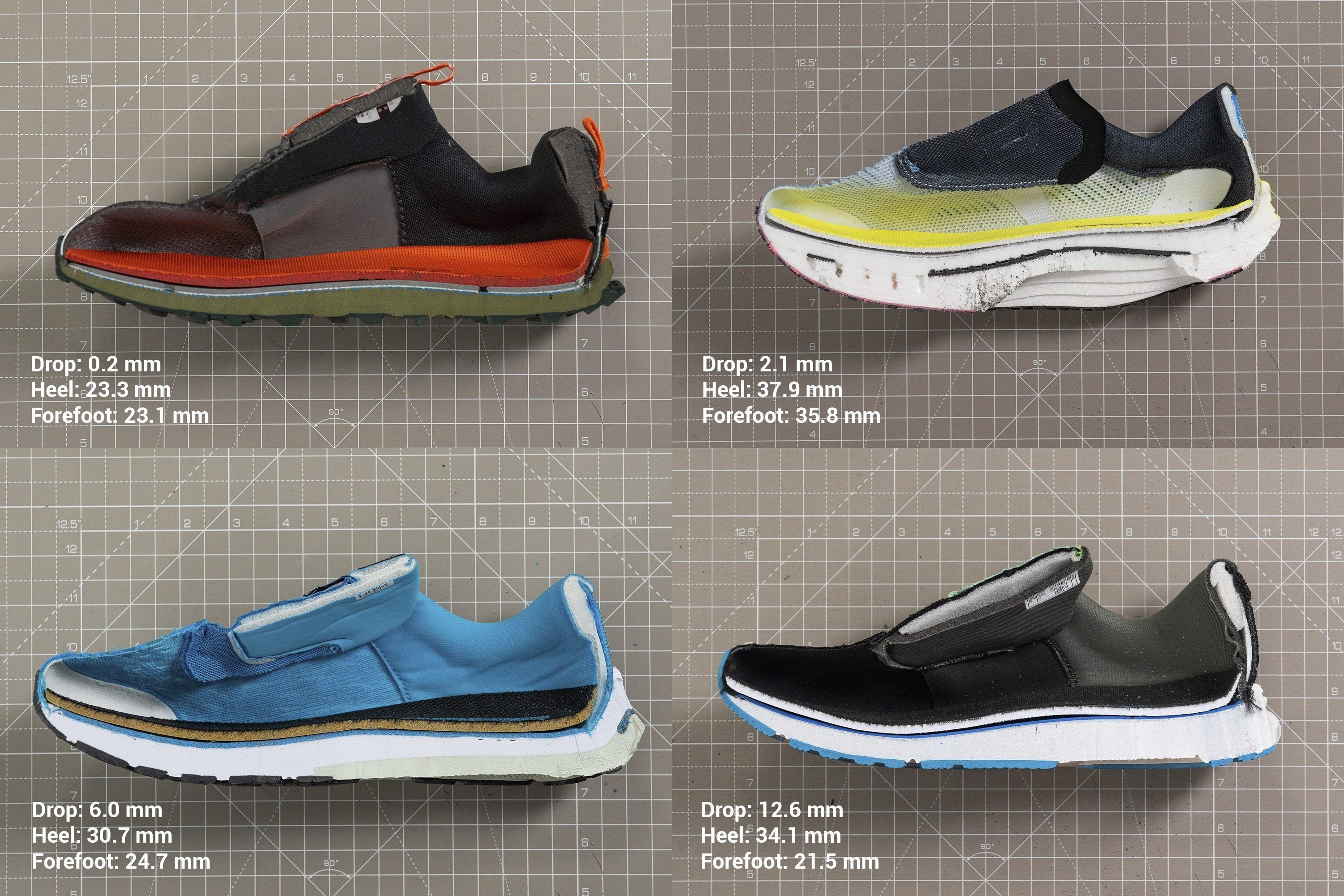
There are many variations between stack heights and heel drops, and although it might seem that zero drop is exclusive to minimalist running shoes, Altra is here to beg to differ. The same goes for the low drop, as we have many Hoka models with low heel drops, yet those shoes are very high off the ground.
Non-written industry standard sits around 10mm. This is what we recommend to beginners (range between 8 and 12 mm). However, you should know that zero-drop shoes will use the most out of your foot muscles. Low-drop shoes will utilise your calves and Achilles and higher-drop shoes will utilise hip muscles and thighs.
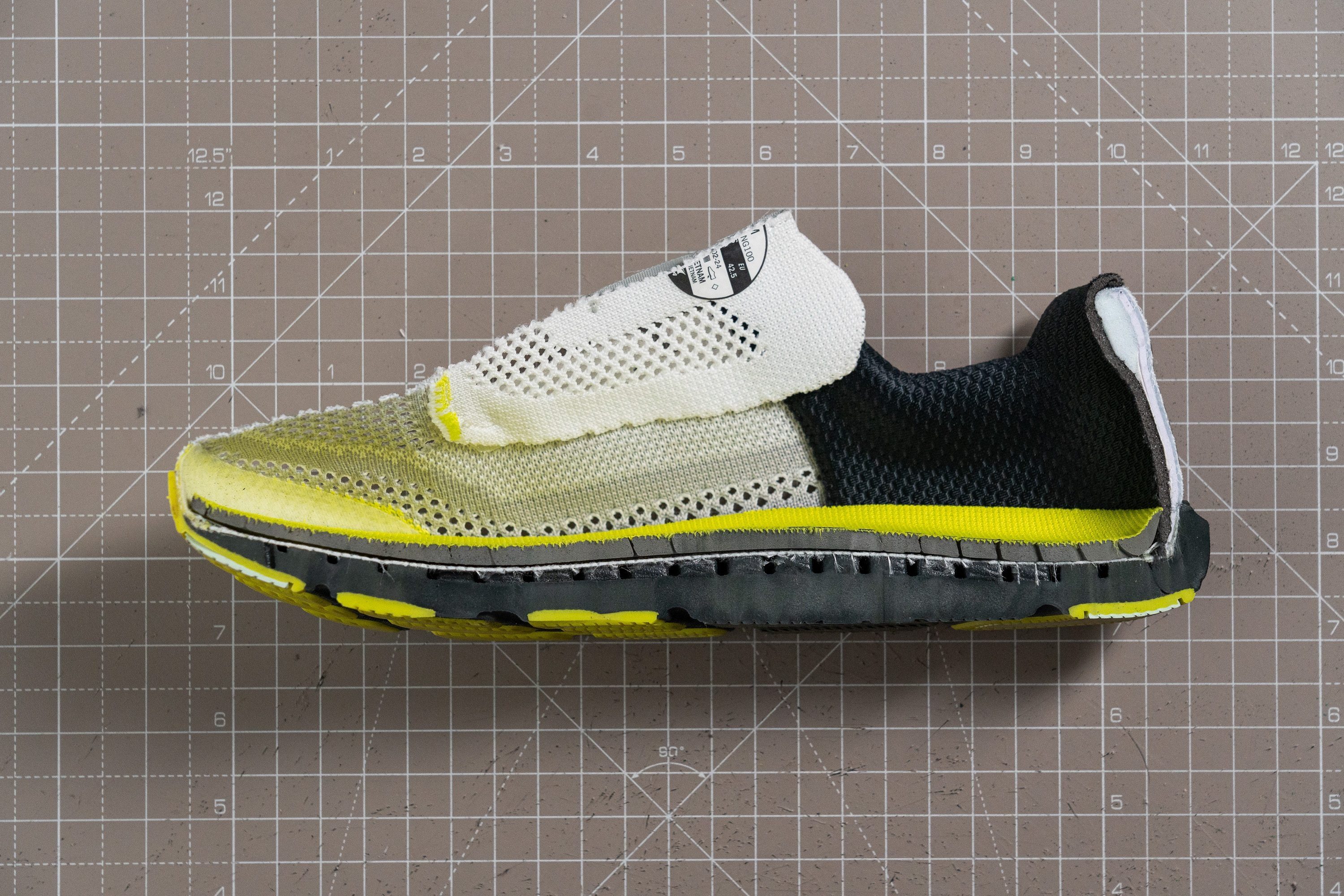
If you plan to transition to low-drop or zero-drop shoes, you should do it very gradually. It takes time. Often, forefoot strikers with neutral pronation do it easier than heel strikers with overpronaiton. In case you want to learn more about heel drop, read our insanely detailed Ultimate guide on heel to toe drop.
Lab tests: softness of road running shoes
Is softer always better? Definitely not.
Soft foams can feel very comfortable, but they can also be a) very dull, meaning your feet will sink in and have difficulties coming back up, or b) very unstable due to all the softness.
On the other hand, we have firmer foams that offer more stability and protection.
In our shoe lab, after cutting the shoes in half, we stick a shore A durometer into the foam to measure the softness. This is the only right way to do it. Many testers do it on the outside but, keep in mind that foams come with paint on the outside or protective layers that can give very different (wrong!) softness readings.
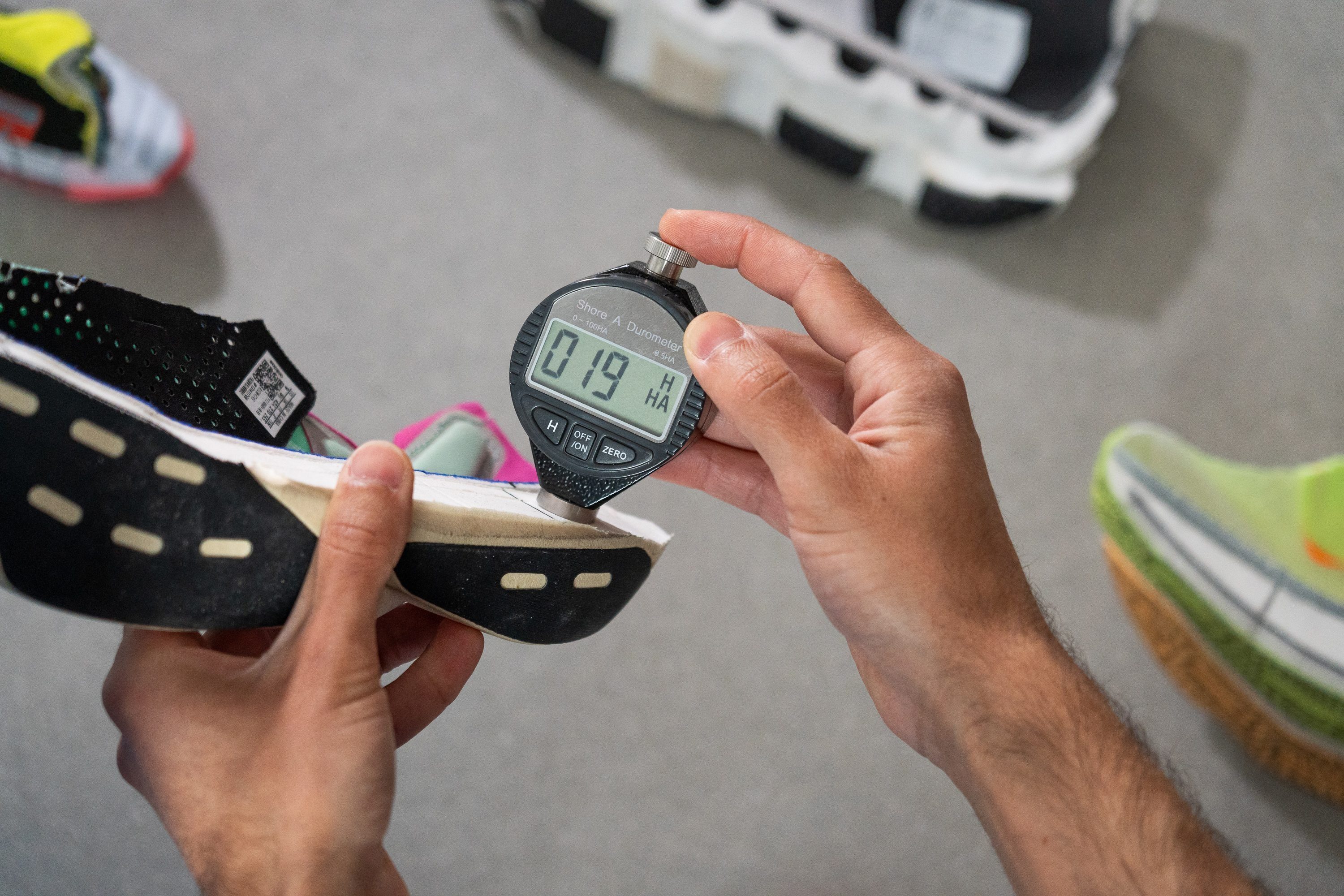
The higher the number on the durometer, the firmer the foam. Knowing this, it’s easy to understand which shoe is firmer or softer.
Firmer midsoles can often be found in stability running shoes because runners with mild to excessive overpronation appreciate any support they can get. And, if we’re analysing a dual-density midsole, we take both durometer measurements.
|
If this topic peaks your interest, you can dig deeper and read our very detailed guide Soft vs. Firm Running Shoes. |
Keep in mind that softness is only one metric. If we're looking at the midsole as a whole, shock absorption is what beginners should care about more than softness.
Energy return of road running shoes
In running, there are 3 shoe groups based on the pace: daily trainers, tempo shoes and competition shoes. What does that mean in terms of cushioning?
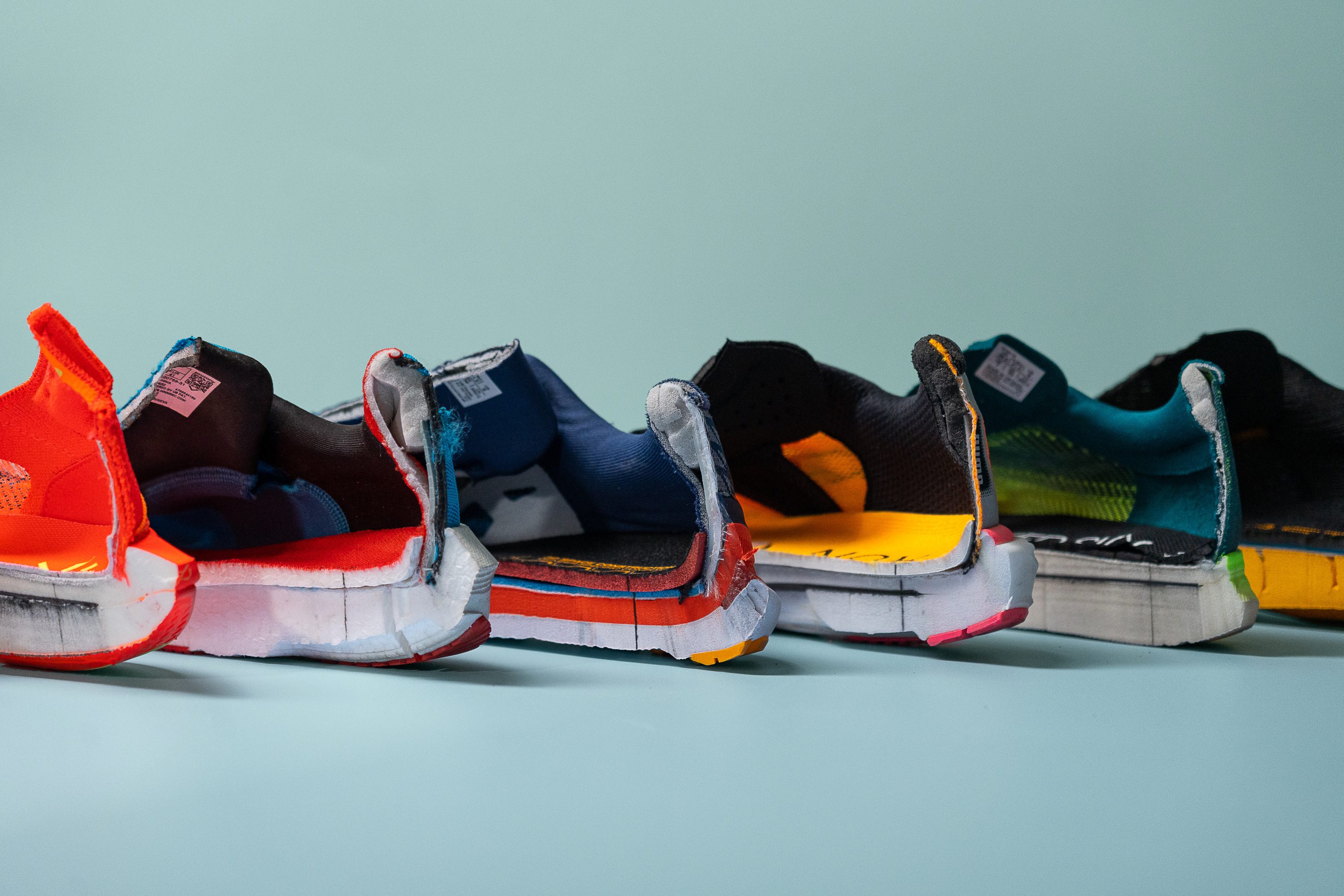
Daily trainers are used for easy runs, recovery runs, jogging, and racking up the miles. These shoes are usually very cushioned and very comfortable. However, given that the pace remains slow, the foams don’t have to be super responsive (and, therefore, expensive). Usually, we see standard foams implemented in daily trainers.
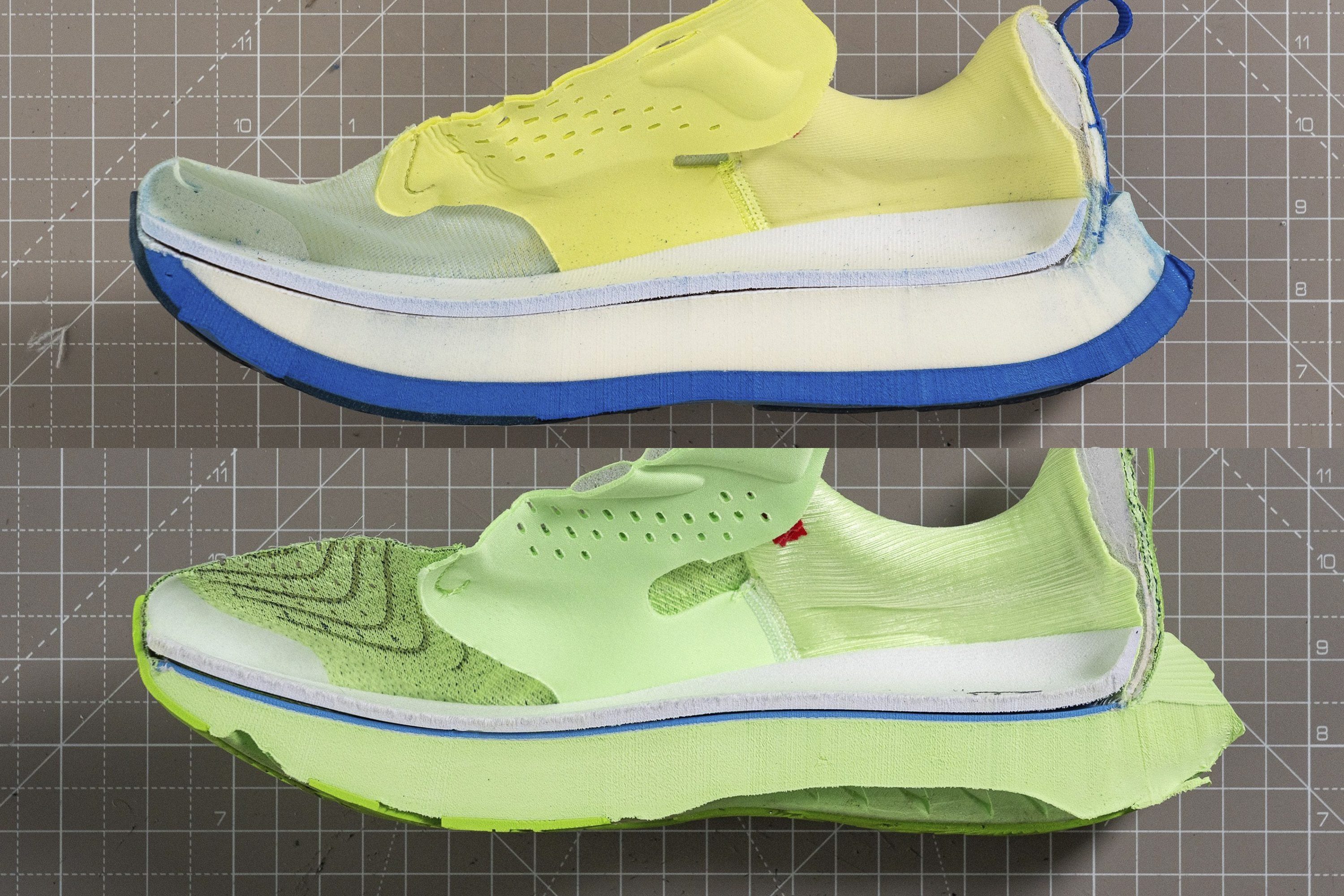
|
Standard foams are usually very affordable, durable, and stable. But, they can feel dull and not responsive, they don’t do well in winter (they firm up a lot), and, when covering the same mileage in standard foams and premium foams, it can feel more tiring in the standard ones. They are not famous for leg-saving features. |
In race shoes, on the other hand, the best you can get is premium foam. Combine it with a carbon plate, and you’ve got yourself one of the most responsive shoes on the market.
|
Premium foams offer an impressive energy return, feel super fun (and bouncy), and feel less tiring for the feet and legs. On the flip side, they are expensive and often not durable. |
Fortunately, you don't have to know all the foam names by heart and their type. We actually test energy return in our lab and publish test results for all the shoe models that we test.
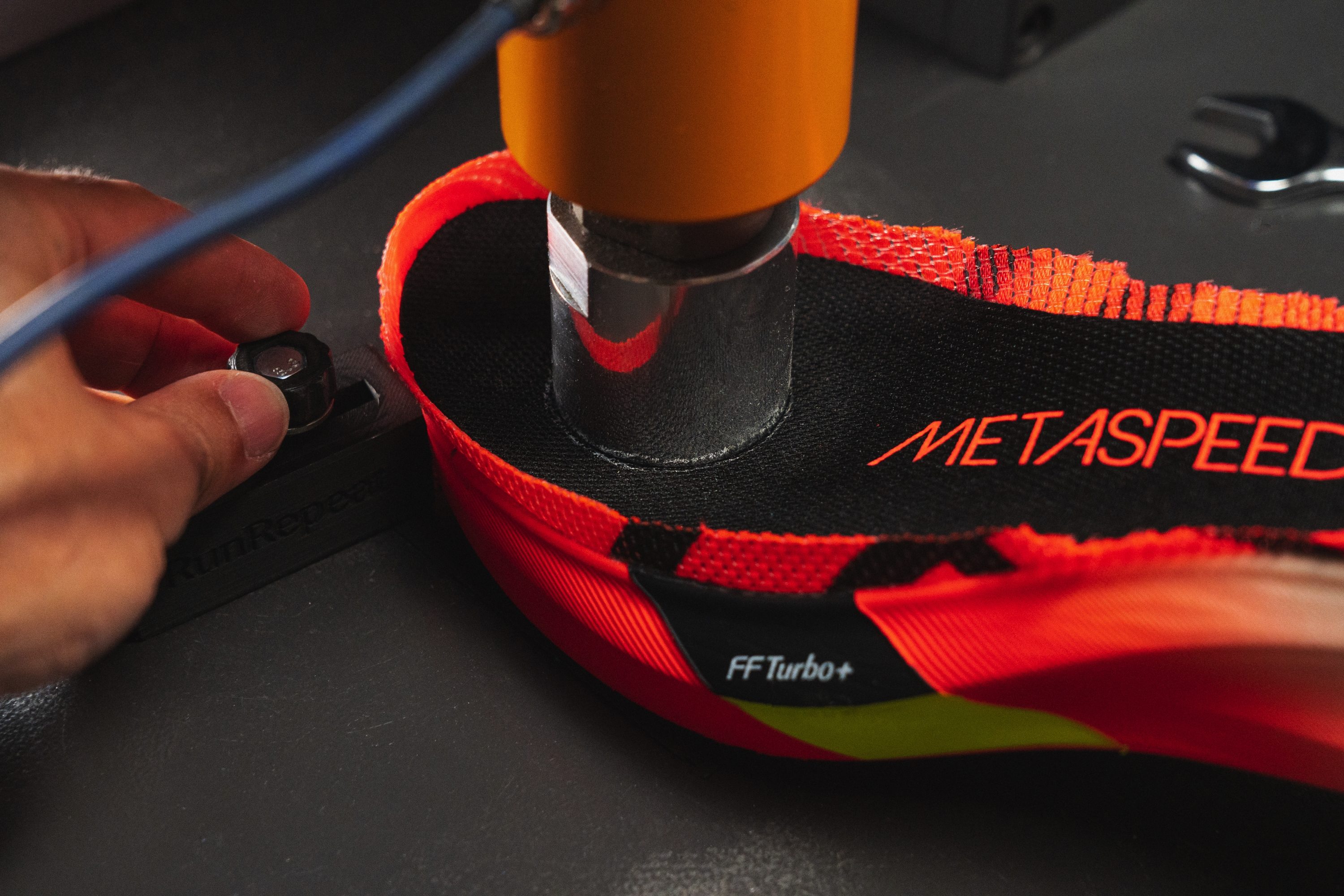
High energy return means that the shoe feels responsive and this often means runners can run longer distances with no extra fatigue. However, the peppy ride usually comes at a higher price and in a less durable packaging.
Some running shoes, like daily trainers, beginner shoes, or stability shoes, don't get sky-high energy return test results because their priorities lie elsewhere. That is understandable but it does not mean one should satisfy with the lowest-scoring shoe out there.
How padded are road running shoes?
This mostly depends on the pace. Daily trainers are usually very padded to make your ride as comfy as possible. We’re talking about tongue padding, heel collar and heel counter padding.
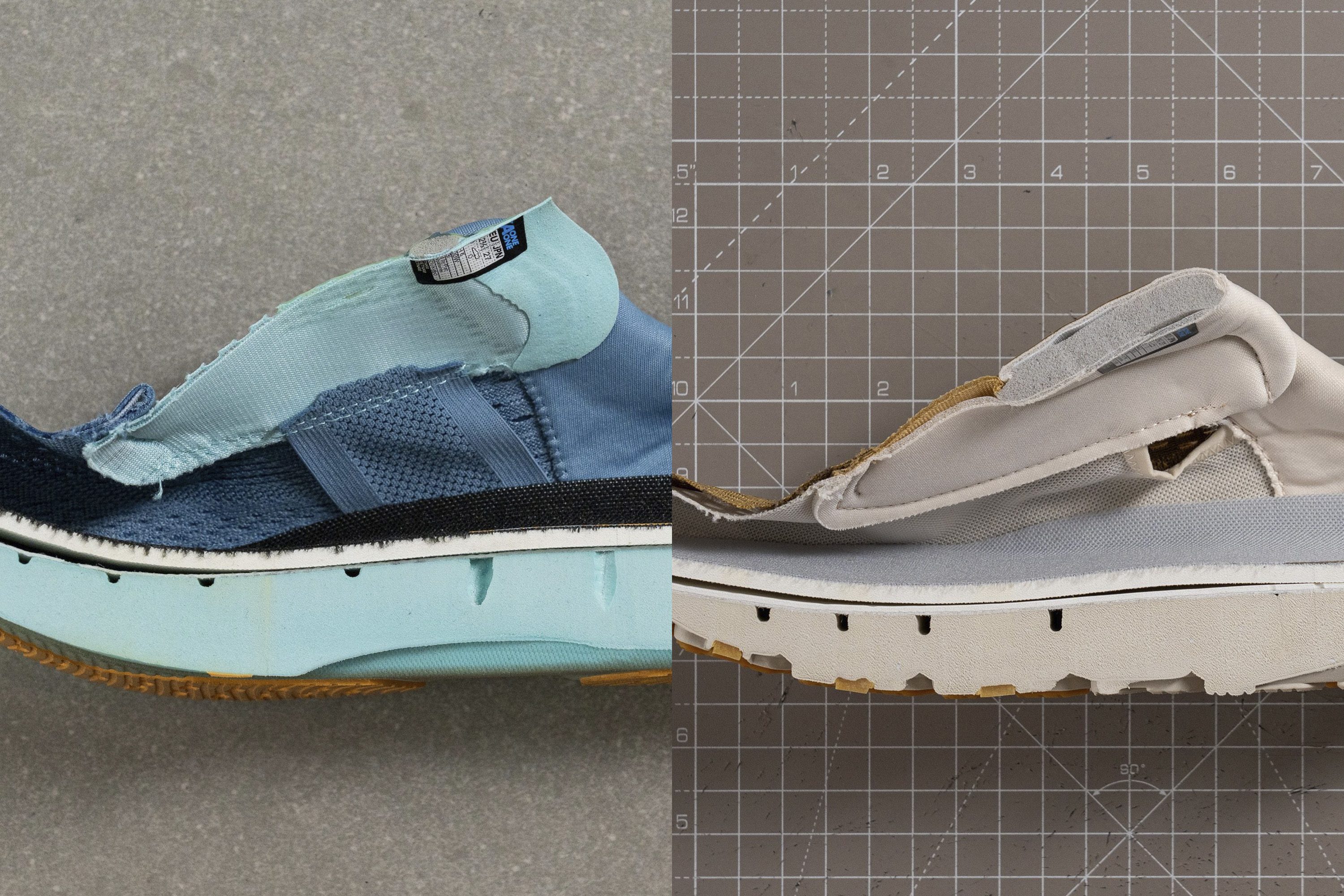
If the thickness of the tongue is something you care about, you most likely experienced a lace bite. A lace bite happens when you tighten the laces and feel the pressure, or the bite, on the instep.
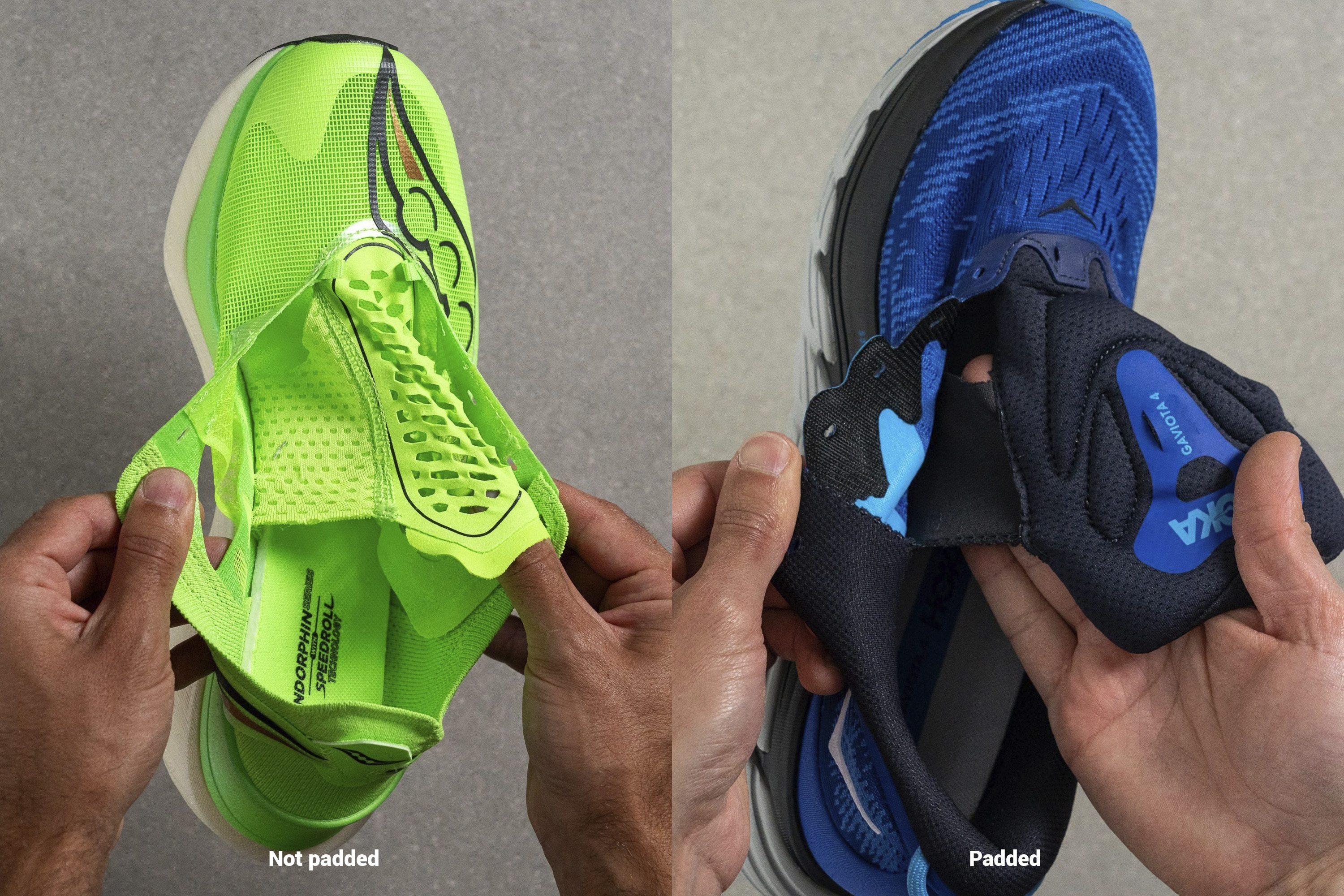
Thicker tongues lower the possibility of a lace bite.
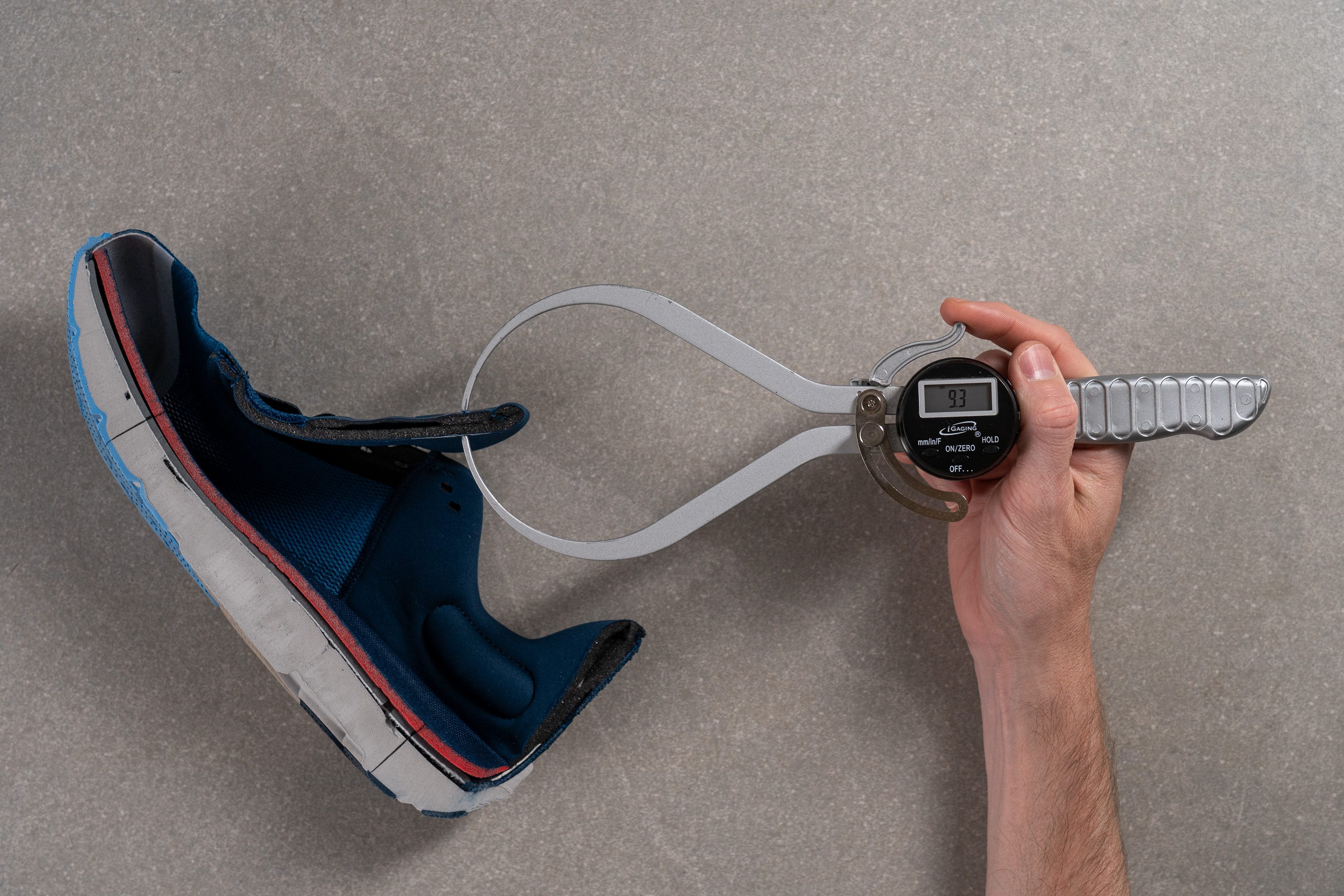
As we see below, the thickest tongues are found in daily trainers.
The opposite side: the thinnest tongues are found in competition shoes.
On the other hand, we have race shoes that are often not padded at all. This does not mean they are not comfortable; a premium sock-like upper can be very soft. But these shoes often cut back on the tongue and heel padding to cut weight. A thin upper definitely screams race and is more aggressive than a daily trainers’ thicker upper with a lot of padded details.
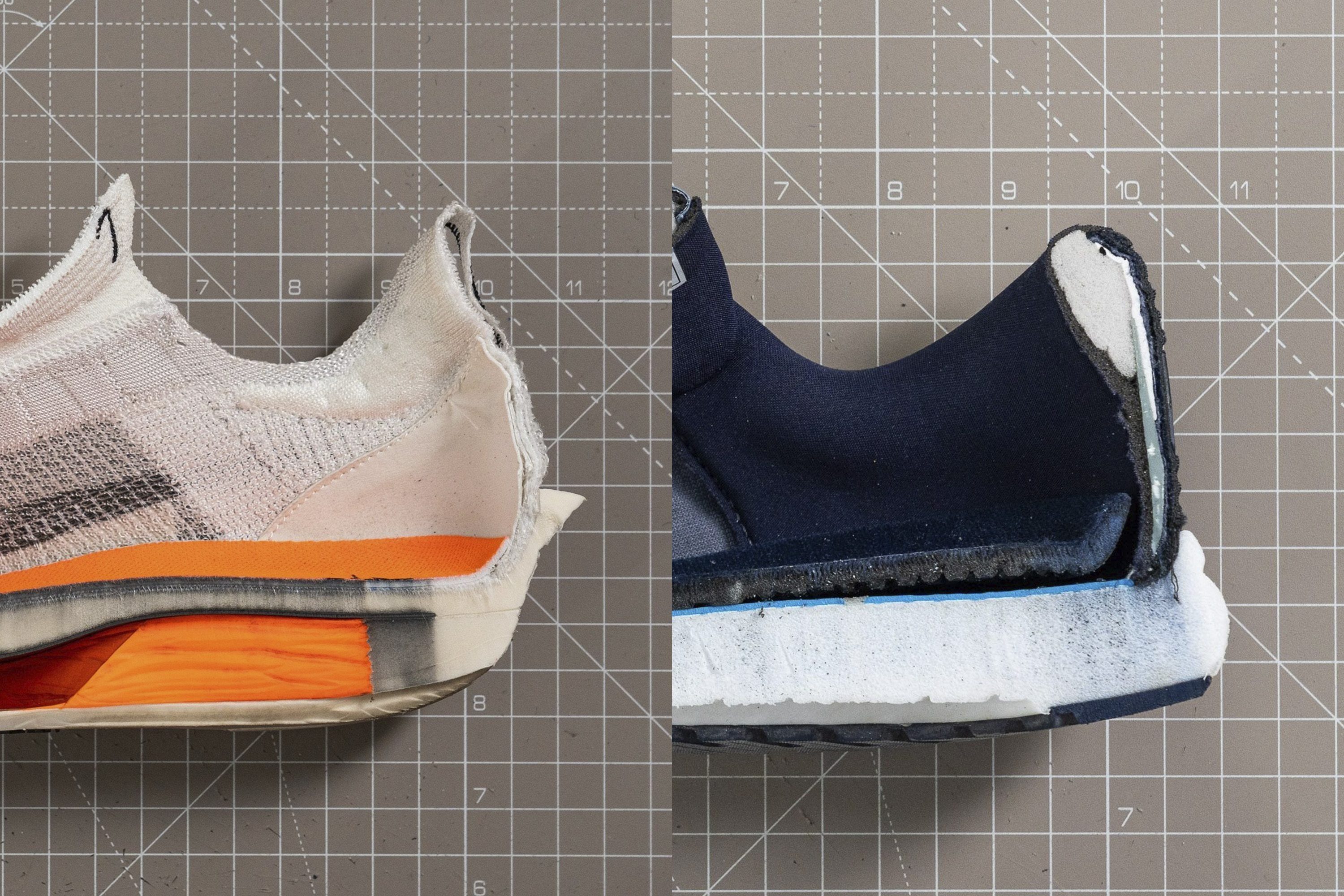
The most padded heels, along with the heel counters, are found in stability running shoes because stabilising the heel for overpronators is of utmost importance.
Nailing the grip in road running shoes
First, you should know whether you’ll be mostly running in dry or wet conditions. Just like in car tyres, it matters for traction.
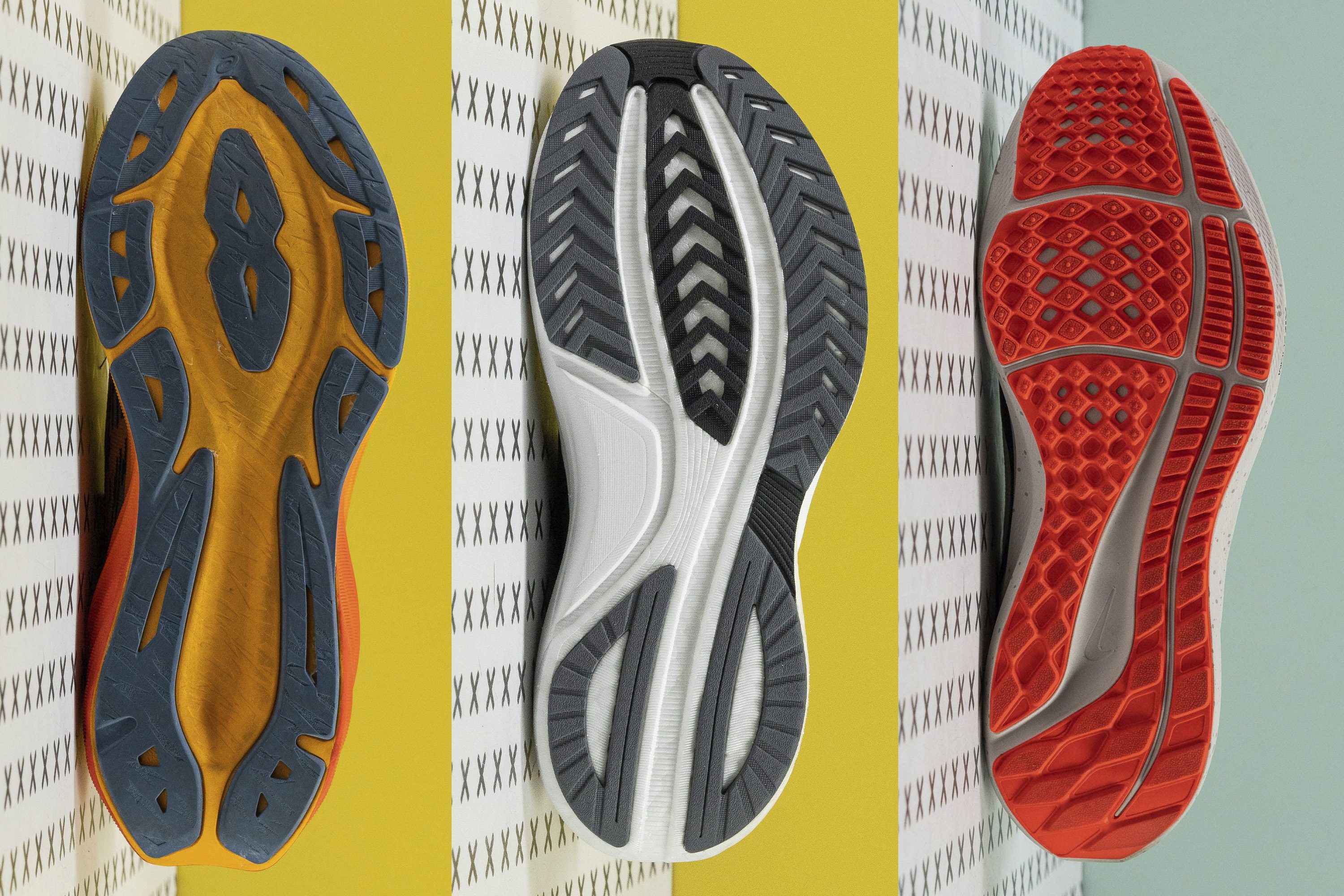
For wet weather, we suggest outsoles that have a lot of grooves and channels and outsoles that are mostly or completely covered with rubber with no or as little as possible exposed midsole. For dry weather, the tread pattern does not have to be complicated.
Fortunately, we have a machine that we use to measure the traction of running shoes. We do so in critical conditions, which means we test the traction on wet surfaces. The higher the result (coefficient of friction), the better.
In race shoes that are mainly made for forefoot strikers, you’ll find rubber placed only at the front. If you’re a heel striker, you might be able to use these shoes anyway, but the exposed midsole that you’ll land on will wear out significantly sooner than the rubber and it definitely won’t grip nearly as well.
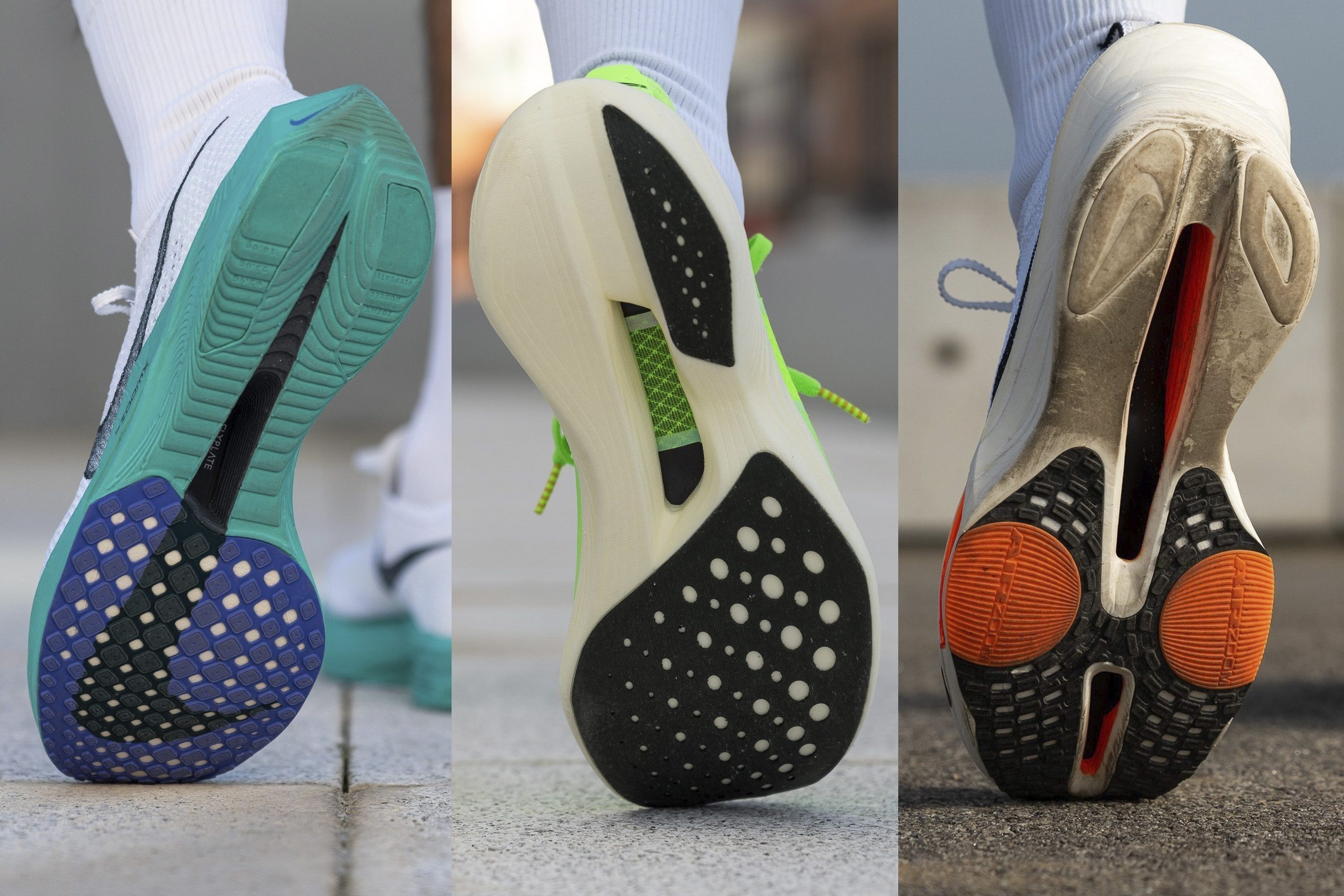
When it comes to rubber coverage, we recommend the maximum if you plan to run mostly on wet surfaces. The exposed midsole will just slip and slide. However, in dry weather and in race shoes, having exposed midsole or even chunks of the midsoles cut out can help with increasing the flexibility of the shoe, shedding the shoe weight and, therefore, improving the runner’s speed.

|
If you want to take an even deeper dive into this topic, we’ve got you covered: In-depth insights into running shoe outsoles (road & trail). |
Outsole durability in road running shoes
Daily trainers have much harder outsoles as they are made to last and, as many have experienced, including us, some last even up to 1,000km. On the other hand, race shoes have to be as light as possible so their outsoles are sticky (softer) and very thin.
We test durability using our Dremel. We standardised the test, so every outsole is met with a Dremel at the same speed (RPMs), pressure and duration.
The bigger the dent, the less durable the outsole. We use a tyre tread gauge to precisely measure the depth of the dent, so it’s easy to see how far the Dremel went.
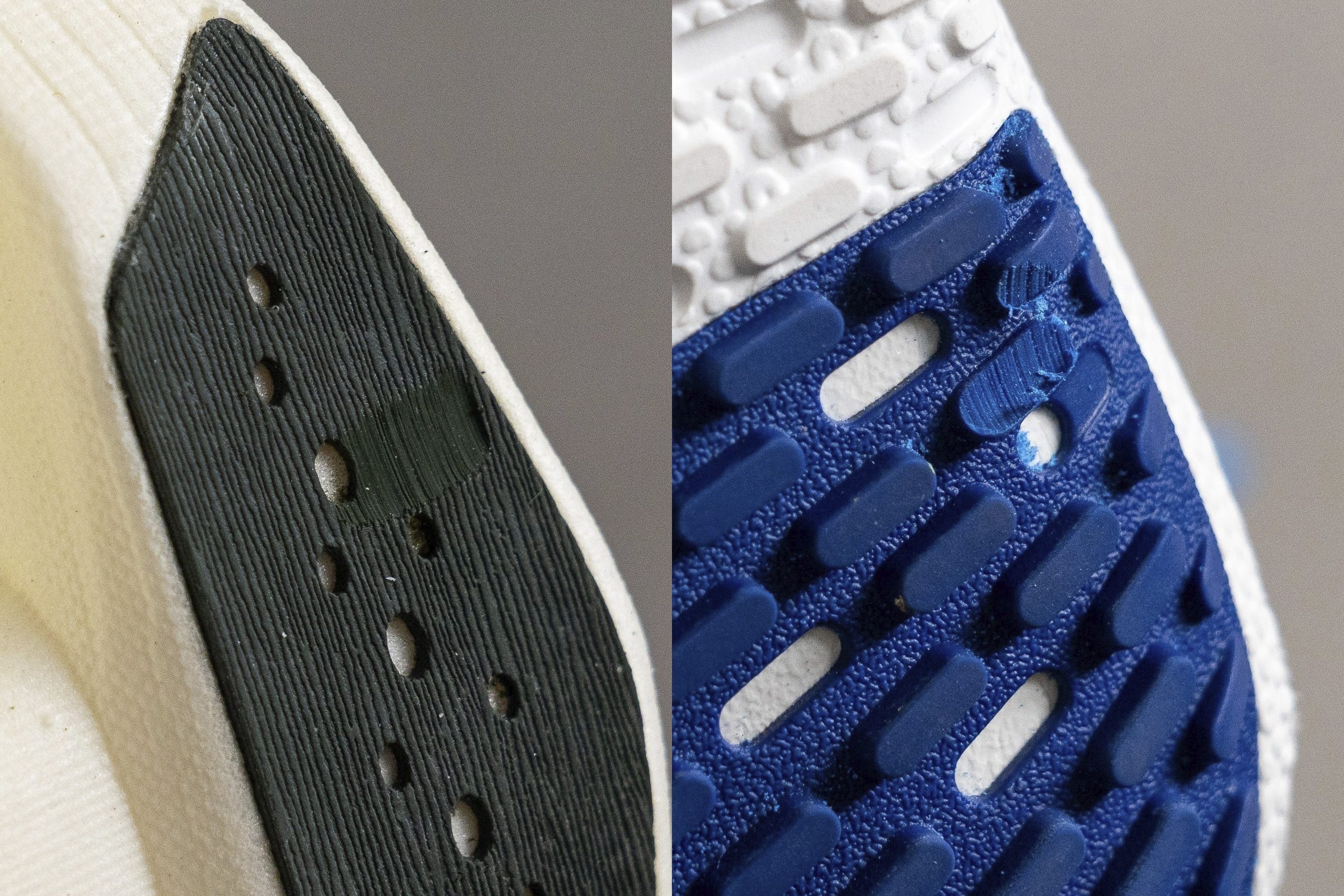
Flexibility of road running shoes
Flexible running shoes are great when you want to experience a more natural running feel. They bend more and it feels good because our feet naturally bend as well.
However, stiff running shoes can bring more stability, support, and responsiveness. Responsiveness, in particular, is most often related to running shoes with a carbon-fibre plate.
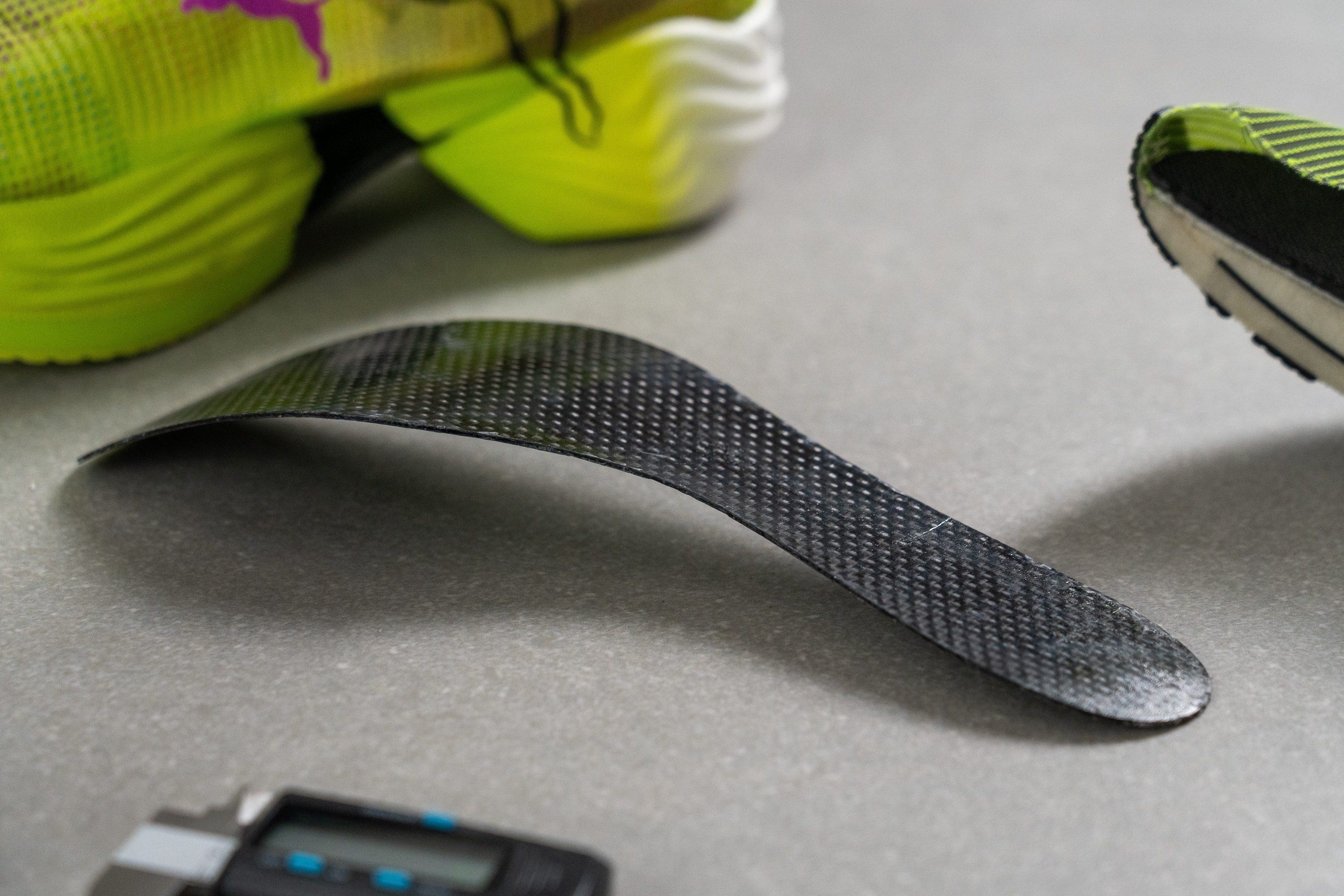
And definitely, they are very stiff and very propulsive!
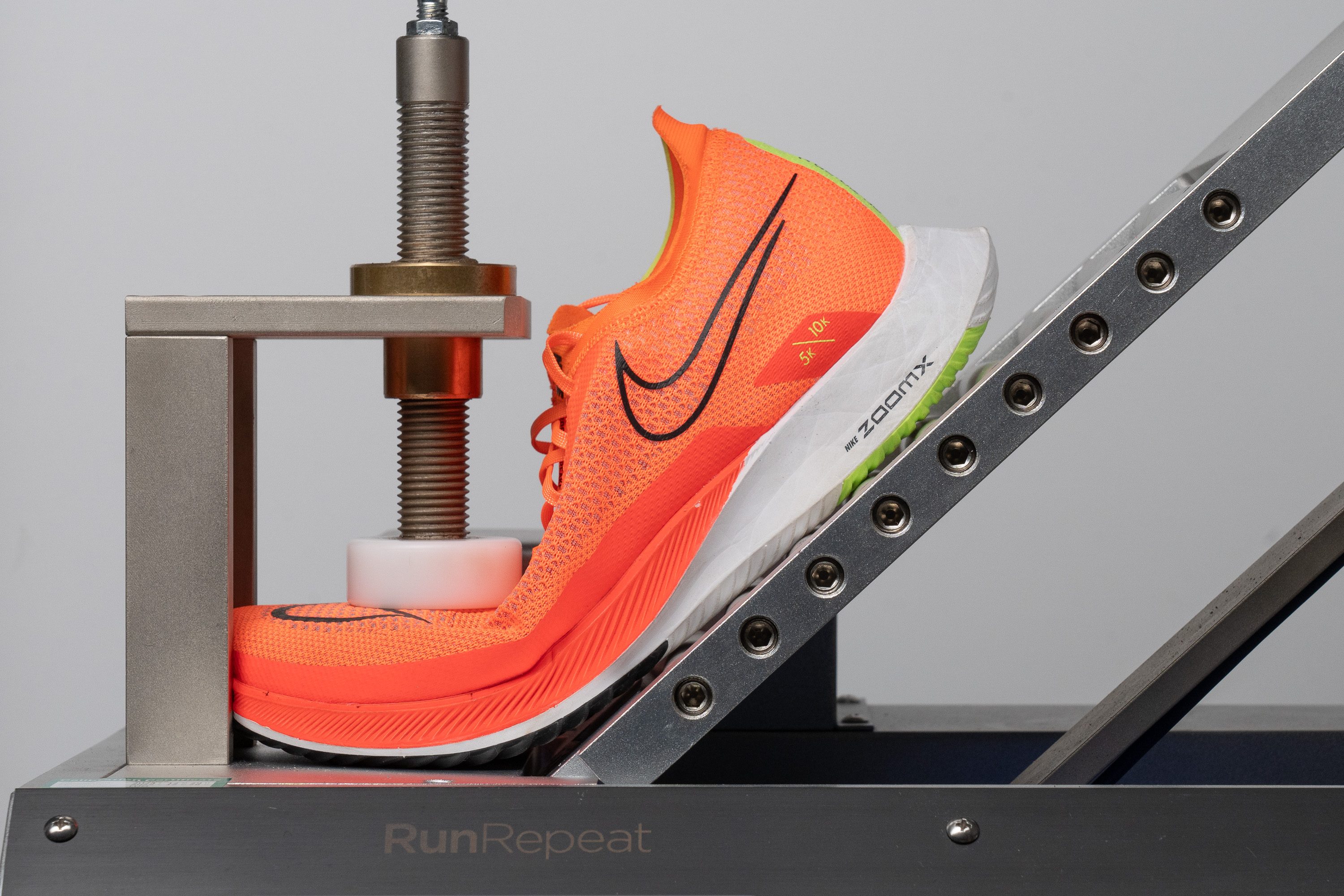
In our lab, we fix the toebox in place, which lifts the heel from the ground due to a forefoot rocker. Because of this, we adjust the position of the plate so that the heel rests on it again. We then bend the shoe to 30 degrees and measure how much force it took us to do that. More force = stiffer the shoe. We also twist the shoe in our hands and assign it a 1-5 rating, where 5 is the most torsionally rigid.
|
In case you want to make a clear distinction between soft and flexible or firm and stiff, read our guide Flexible vs. Stiff Running Shoes. |
Super stable or super fast?
You will rarely have both in running shoes. This is because premium race shoes usully have very tall and narrow midsoles, while super stable shoes have a wider base.
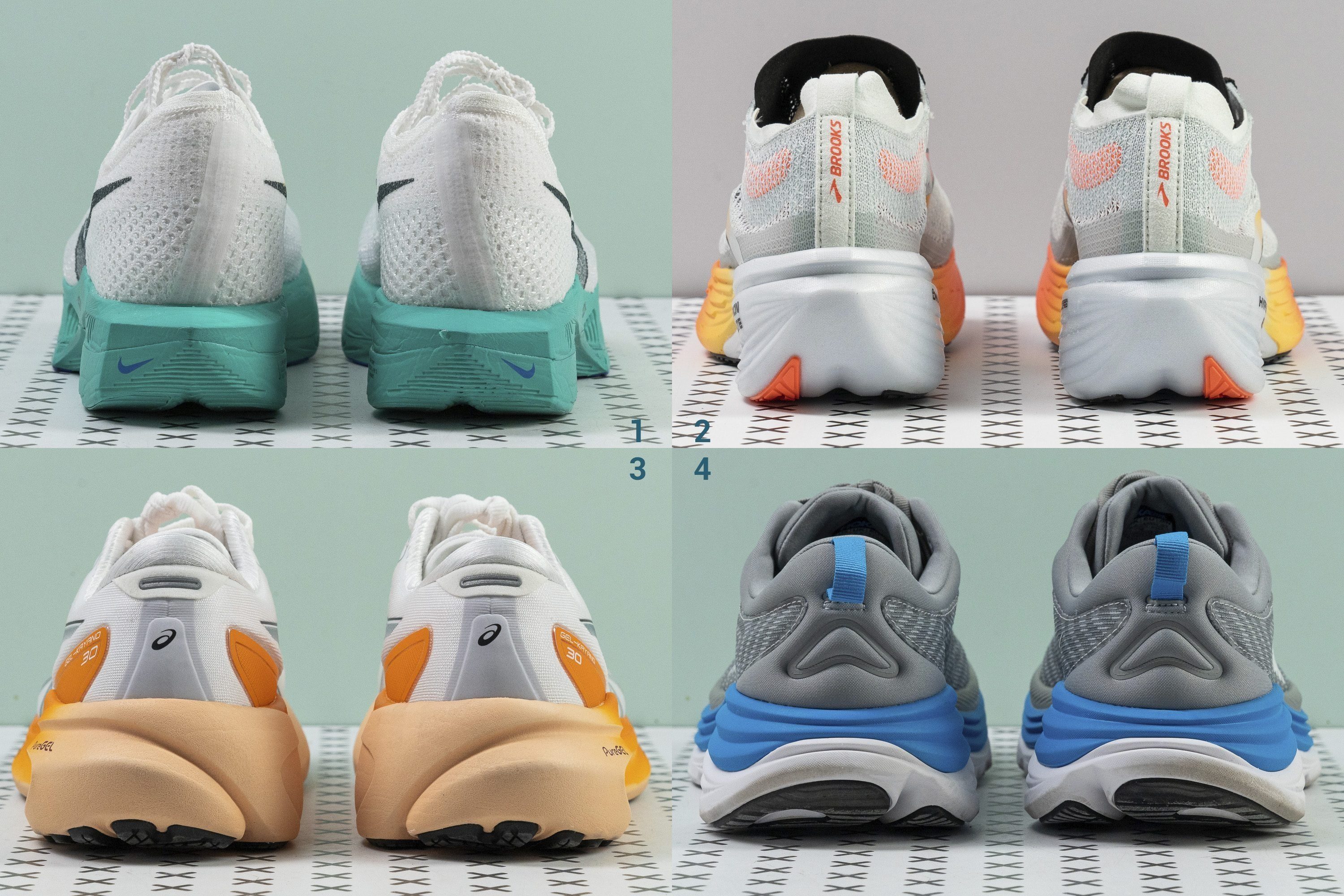
When we say “stable” here, it applies to both a) stability, features that are wanted for overpronators and b) overall stable feel that’s found in neutral shoes as well. Because of this, there aren’t stability race shoes, its features would add too much weight and, therefore, slow the runners down or feel bottom heavy.
The biggest tell whether the shoe is stable is the base's width. The wider the base, the more planted the landings and toe-offs. In our shoe lab, we measure it in 2 places: at the forefoot and at the heel. This way, both forefoot and heel strikers can be at peace.
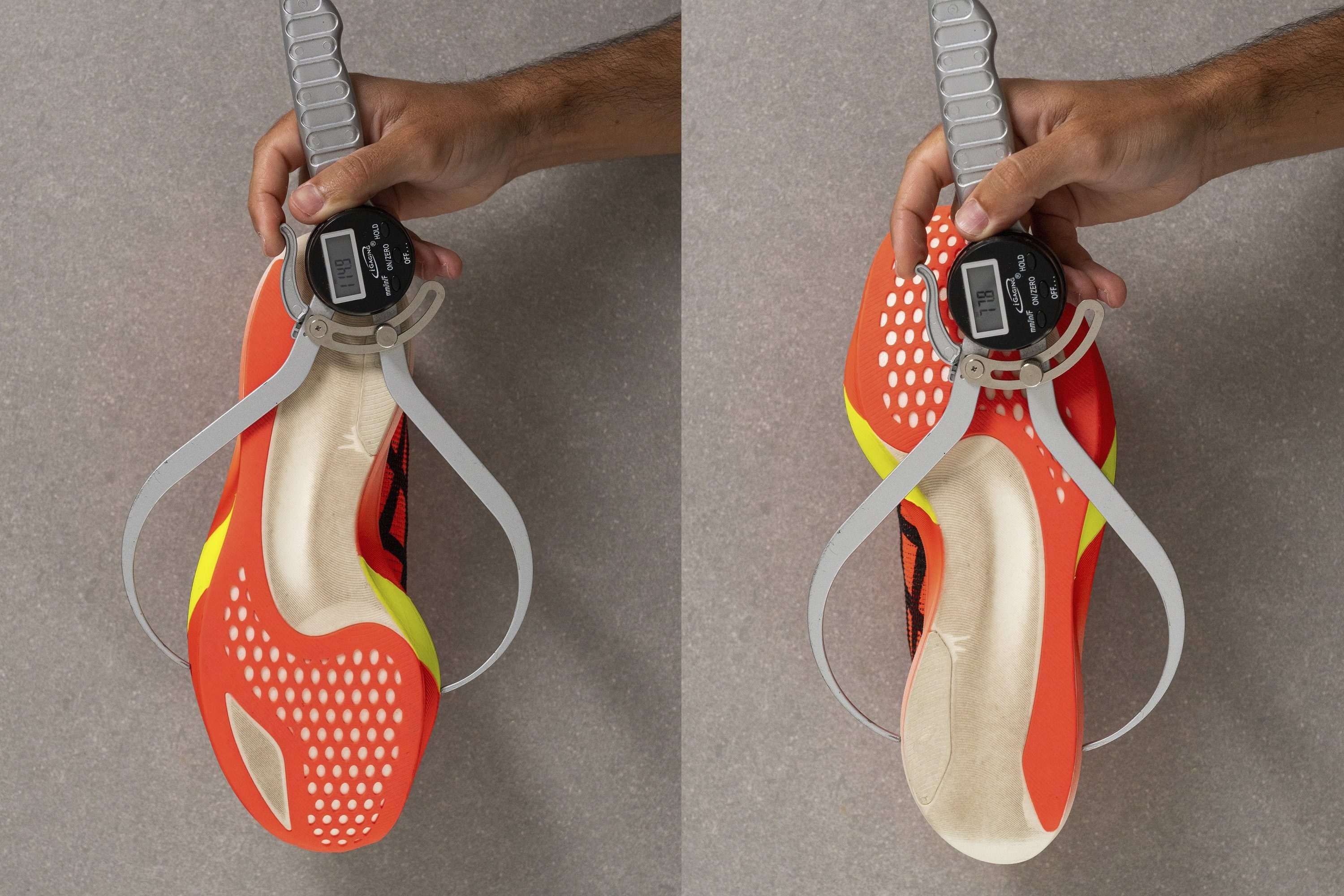
If you’re a forefoot striker, you will most likely care about the width of the base at the forefoot:
In case you heel strike, it’s important that the landing is not wobbly but planted. The wide base at the heel makes sure of that:
Weight of road running shoes
Almost everything discussed above impacts the weight of the shoe. What makes shoes heavier: stability features, wider midsoles, full-rubber outsoles, padding. What makes shoes lighter: lighter foams, cutting down on padding, midsoles that have chunks cut out for flexibility and cutting the weight down, less rubber on the outsoles, thinner rubber, etc.
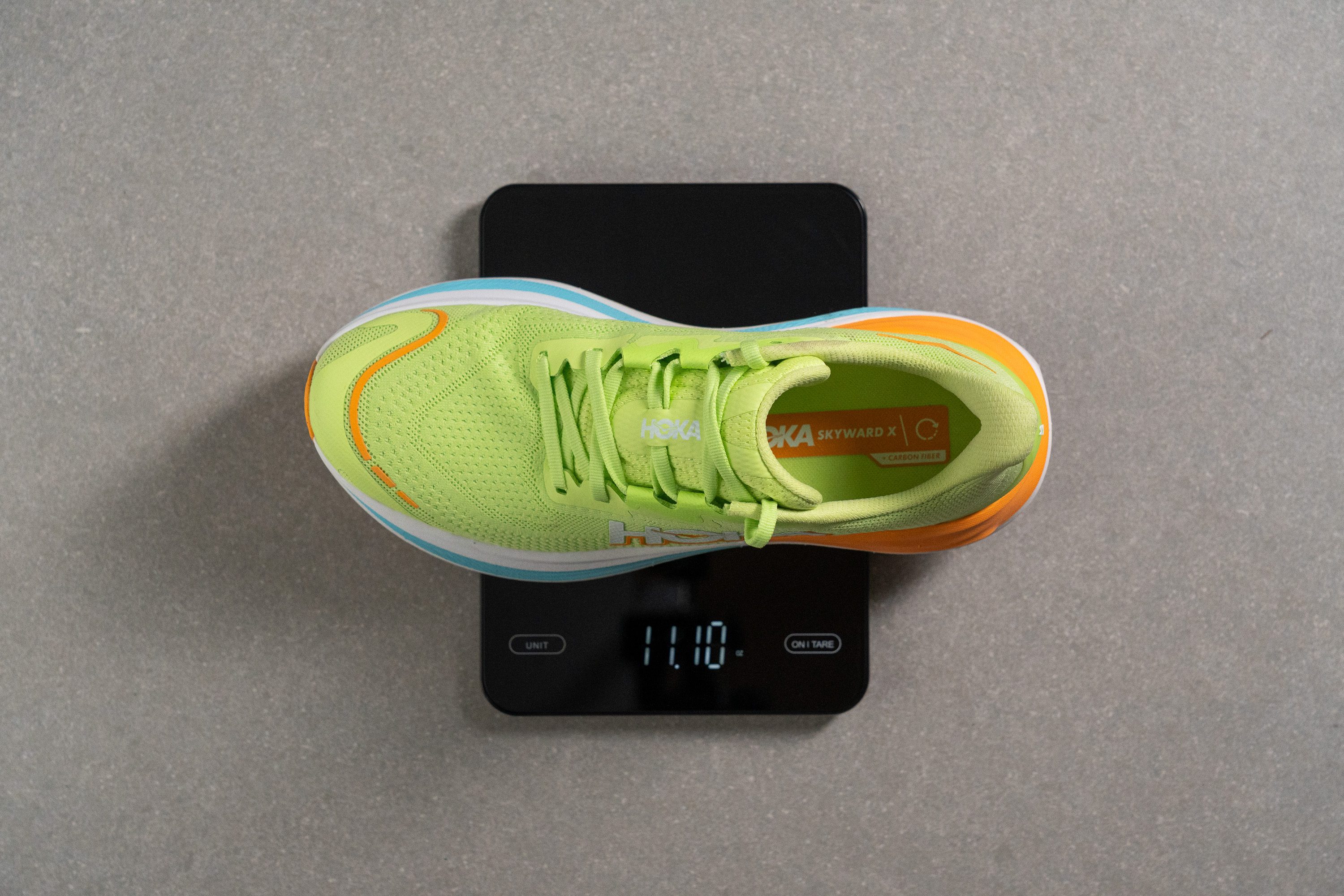
Lighter running shoes can improve your running time but if that means less cushioning that you need on recovery days or less padding that keeps your feet comfortable or less stable due to the lack of rubber… it’s important to know which price you’re paying.
Wide toebox in road running shoes
Your toes should not be cramped in the toebox. Some runners can push through it, usually in very short sprint distances.
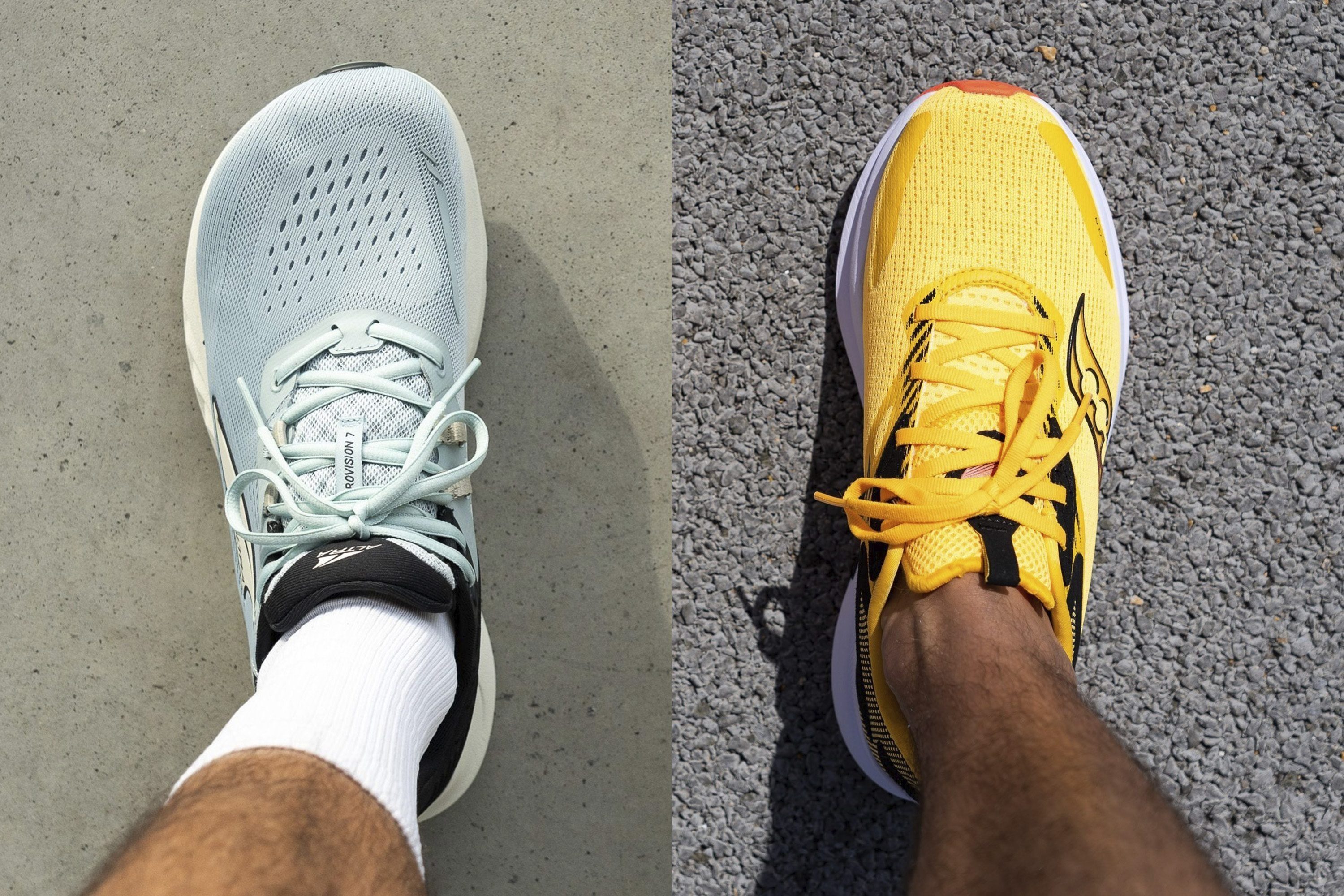
For any longer distances, comfort is of utmost importance. If your toes are usually cramped and need more room, you can always consult our lab measurements to get a sense of how wide the toebox is.
In our lab, we pour a special gel into the shoe and freeze them together. Once the gel hardens, we have a gel mould of the shoe's interiors that we can take measurements of
We measure the width of the shoe where it’s the widest (around the ball of the foot) and at the big toe. We do this because having both numbers tells us how much the toebox tapers (how pointy it is).
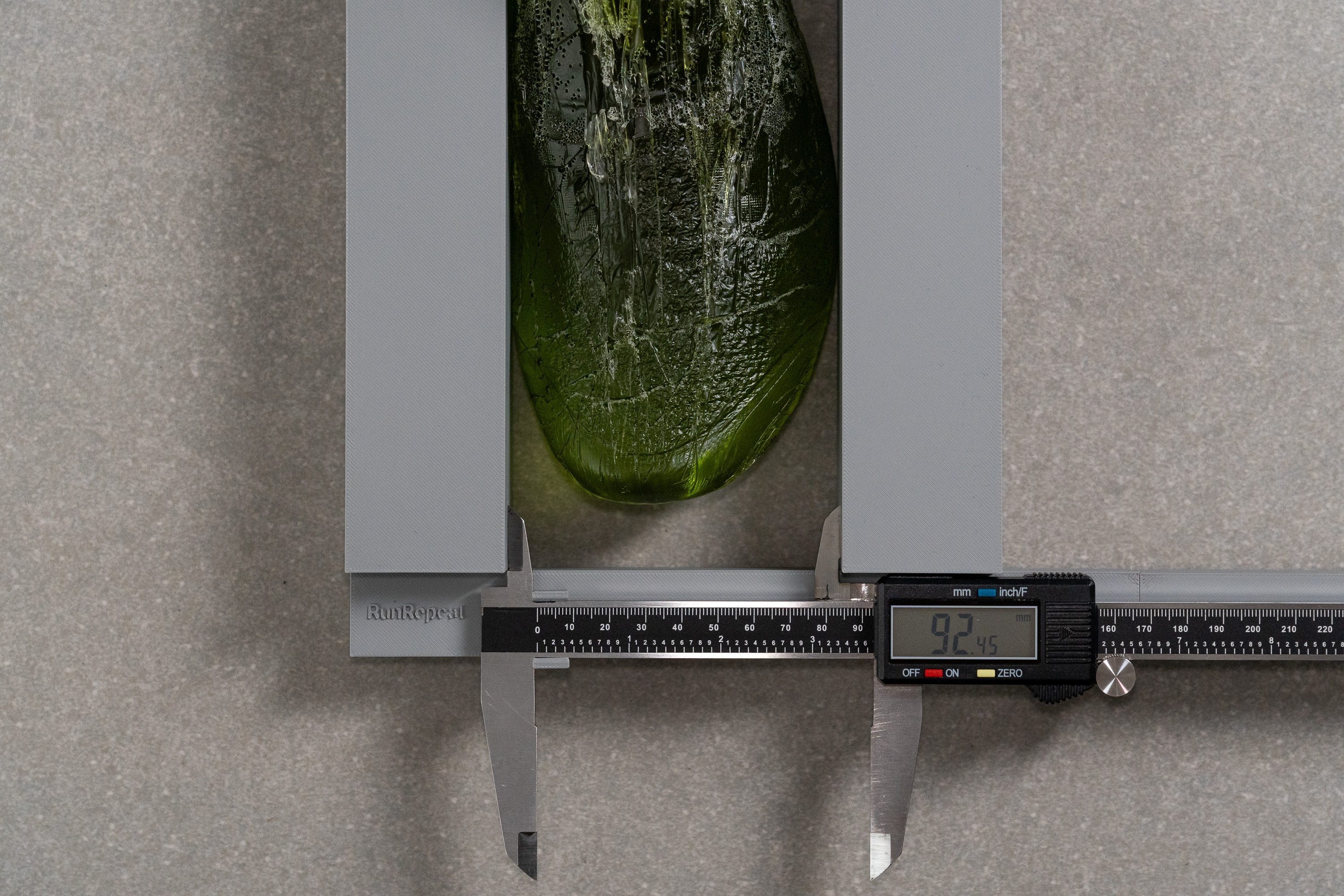
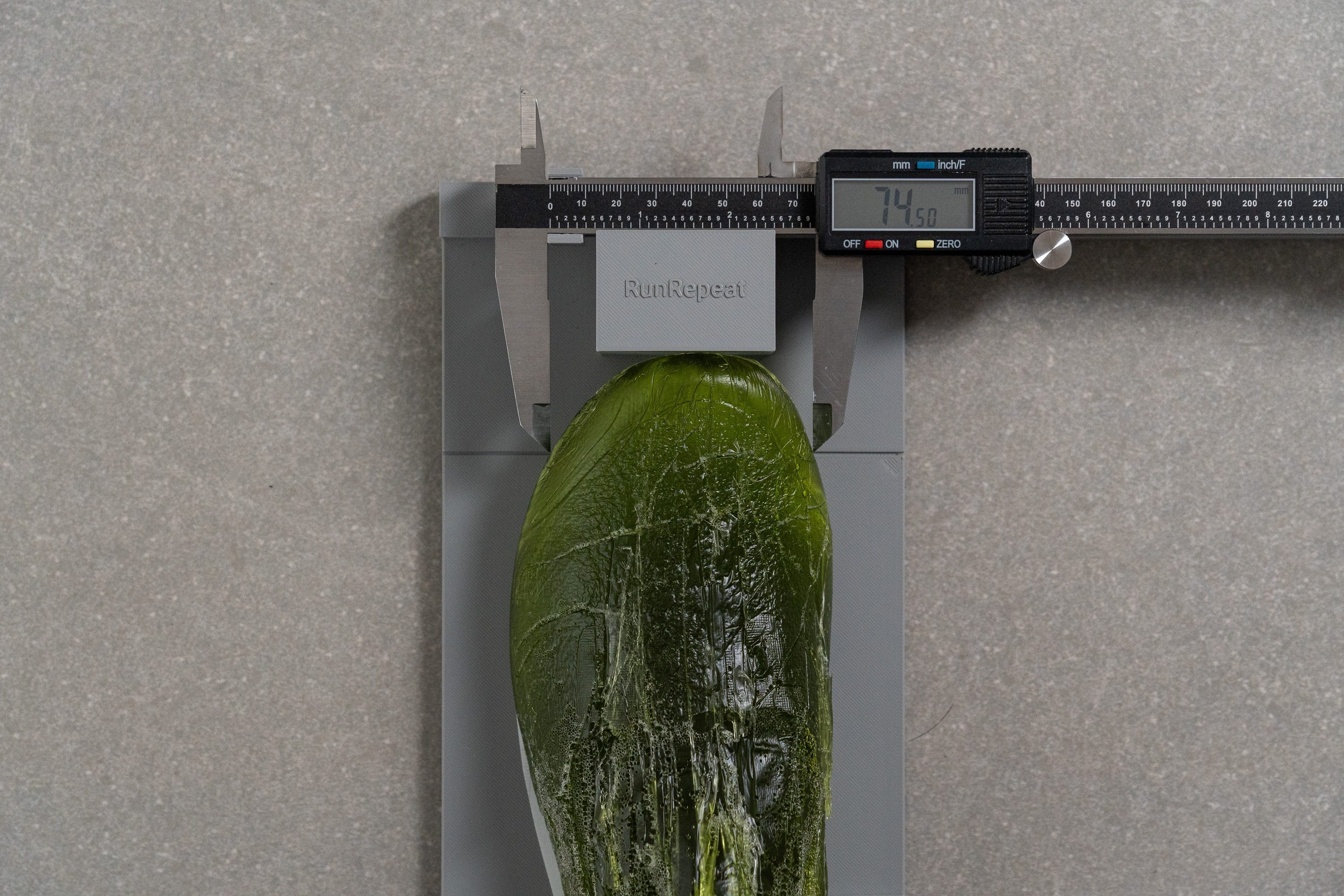
If you're wondering why we're measuring the width in 2 places, see the illustration below. Some toe shapes need more room at the big toe, closer to the tip of the shoe, while other shapes need more room around the ball of the foot.
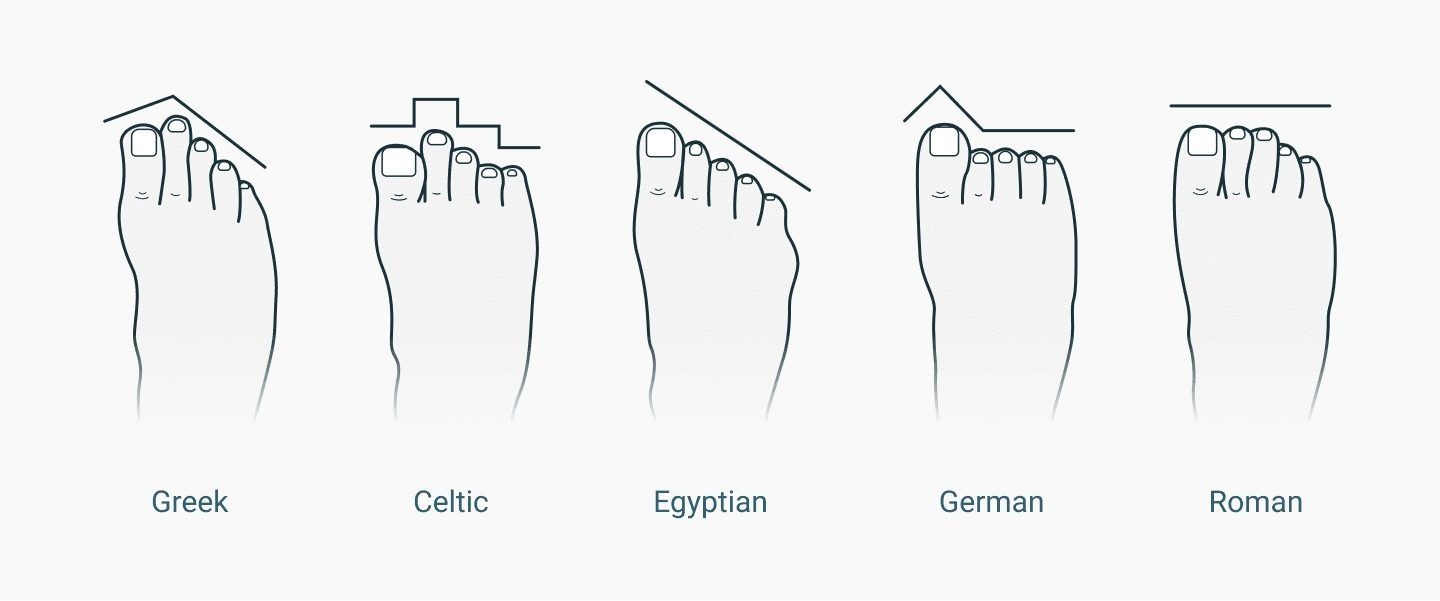
It’s great to know whether you need a toebox that is more rounded to almost square-ish, or a pointy toebox.
Toebox volume is not about width only but also height. We cut our mould in half and measure the height, which is insanely important for runners whose big toes point up or who often experience uncomfortable pressure from the upper on their toes.
